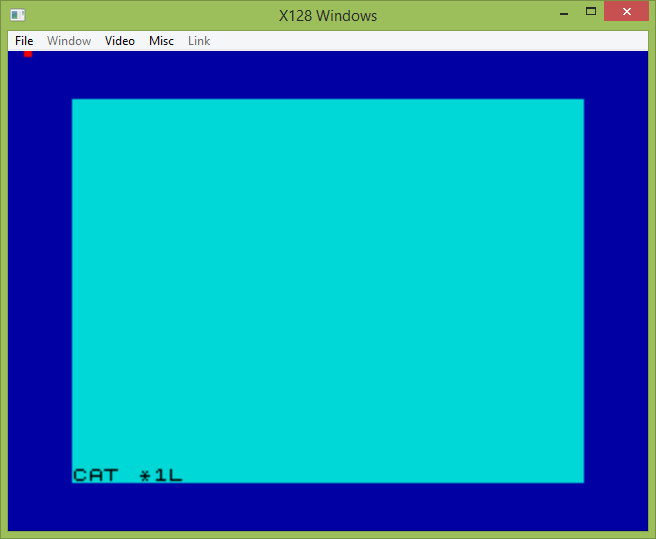
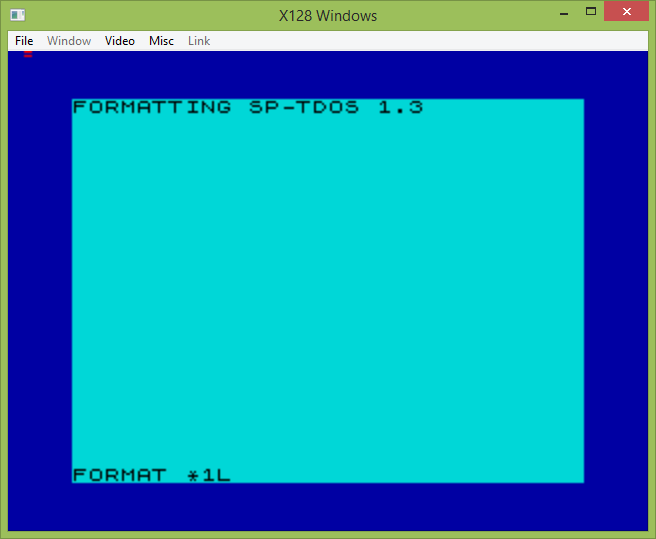
X128 W.I.P. Page
07/12/2025
DISCLAIMER: I give no guarantees that I will ever implement/complete/release anything on this page.
Latest version: x128 V0.95d Open Alpha (DOS & Windows) (24/09/2024)
Online documentation: x128 instructions (02/10/2024)
Offline: x128 V0.95d instructions zip
Current experiments:
07/12/2025
In the Northern Hemisphere, it is approaching the shortest day of the year. Brains become slow. Bodies become clumsy. I have already found my toothpaste in the freezer and I'm not likely to resolve anything as complicated as fixing the CPU scheduler in my emulator.
So... I made a page where I can put vague memories and posts of such poor informational content that they can't be put anywhere else: Vague Stuff
The first post is vaguely related to that short-lived software distribution system: EDOS.
(Am I going to create a whole series of pages and only put one post on each? This is entirely possible).
05/12/2025
In the beginning...
My first Spectrum was a ZX Spectrum 48K+ that was (possibly) bought around December 1985 from either Dixon's or Curry's. It came with a 10 game pack that mostly consisted of Imagine's unsold stock, bought up cheaply when they went bankrupt (Imagine's compulsory liquidation was in July 1984, according to Sinclair Programs, December 1984). The Imagine games were Ah Diddums, Alchemist, Arcadia, Jumping Jack, Pedro, Stonkers, Zip-Zap, and Zzoom. (It also included Quackers and Bomber Birds by Rabbit Software).
Some of the Imagine games had a black and white inlay, some had no cassette label, and some were badly mastered (Ah Diddums was an early version with faulty Fuller joystick support, Jumping Jack had graphical corruption on the main character, and Arcadia wasn't even Arcadia - it was a second copy of Alchemist, so it was really only a 9 game pack! Additionally, Bomber Birds needed to be loaded with LOAD "" CODE, and it took me about 6 months to figure that out, so it was almost like an 8 game pack. But it did feel like I'd been given a new game when I finally got it to load, so that was nice).
The bundle also came with a Matsui cassette player, a Quickshot 1 joystick, and a joystick interface (with no instructions) that just said "Ram Turbo" on it.
Consequently, I had no idea what kind of joystick interface it was and I ended up having to play multiple games of Stonkers with either Sinclair, Kempston/I2L, Protek/AGF, or Fuller joysticks selected until I could finally be sure that I owned a Kempston joystick interface. (If only I had tried it with a game that had a shorter playing time or a quit key!)
The joystick interface was one of the early, cheap ones that did not decode the M1 CPU signal, so it would sometimes register a fire press when pressing down and left (which is absolutely terrible for playing Stonkers) and caused some random effects in some games (including crashes) because it affected the data bus, which affected the IM 2 interrupt vector.
So, everything was as cheap as it could possibly be, but it did mean that I could persuade my dad to buy a computer. (I had, ahem, asked for a C64). The games, despite their flaws, were still good fun and the BASIC was quite capable. In fact, my knowledge of computers at that time came from Input magazine, which was full of type-ins and clearly had the Spectrum as one of its lead formats. So, I was quite happy with it.
It is 2000, the distant future, and it is not time for Klax...
Fast forward to ~2000, I had written my Spectrum emulator, and came across a snapshot of Arcadia. Naturally, I was interested because it was a game I should've played years ago, so I gave it a try.
The game was quite nice for a 1983 16K game but the ship randomly jerked around, so I tried it on a real Spectrum and the same thing happened. I took a look at the code and realised that it was reading from port $7F and that it must be Fuller joystick code. (The jerking was because there was no interface attached and it was reading the port outside of the vertical blank, so it was reading the "floating bus").
At that point, I decided to emulate the Fuller joystick. I didn't have any documentation, so I implemented it just by setting and resetting some bits of port $7F until it appeared to work. I then tried it with other Imagine games and they worked too, so I guessed that the emulation was ok.
Somewhere in the even more distant future...
Fast forward to 2024, and I was investigating all the different joystick configurations that were possible. I tried a number of games, but I found that quite a lot of them just didn't work with my Fuller emulation.
Interestingly, some games were just plain broken but some expected the joystick bits to be "active low" (0 = pressed), while I had implemented it "active high" (1 = pressed).
I now owned a Fuller Box, so I tested it for the first time... The interface was "active low", so my emulation was wrong. So... why did it work with some games and why were so many games "broken"?
I decided to dig a little deeper, and ended up with this: Max Headroom and the mystery of the "Don't Know" joystick (Wow, is that a clickbait title or what?)
I've put it in "Info", even though it touches upon emulation (so it could be on this page) and it also contains Code Snippets, so it could've been placed there too. (Do I need a proper blog with tags and a content management system? No, I don't want to start or sign up to anything...)
05/12/2025
To help run down the clock, I shall post some information that I've had for the last couple of years, but I've never got around to tidying up.
13/11/2025
I've added a little section to hold some Code Snippets to avoid filling this page up too much. The only one there (for the moment) allows you to access the FDC-1 from BASIC and also how to pass a string to a machine code routine.
02/11/2025
"Speak of the disk interface and it shall appear", or so the old saying goes...
No sooner had I mentioned the Triton Quick Disc (or Disk, the advert includes both spellings) than the ROM became available. Well, actually, it was uploaded to archive.org nine months ago... and the files were date-stamped as 2021... but I don't talk to people and people don't talk to me, so why would I be surprised. (It was also hidden in a file marked "C64 version"). Thanks go to the uploader and the dumper (should they turn out to be different people).
As I run out of disk interfaces to emulate, we are firmly in "quirky disk interface (with some odd properties) that did not last long" territory.
A Quick overview of the Quick Disk
It's a floppy disk that is essentially one big track. You do not have "seek" commands, nudging the head up and down the disk surface. Instead the head automatically moves inwards (in concert with the revolution of the disk) in a spiral. Once it has reached the end, it disengages and returns to the starting position. The whole process takes around 8 seconds.
Normally, people would use the analogy of the groove of a vinyl record, but (let's face it) there are a lot of people who will never have seen a vinyl record. So what analogy could be used... umm... it's like the Dreamcast logo in reverse? Uh, no... plenty of people won't have seen that either.
What is the capacity of a Quick Disk? (An unclear answer will follow...)
Officially, each disk can store 72K (unformatted) on one side and you have to manually flip it over to access the other side. It's very tactile, what can I say.
The formatted capacity depends on the encoding method used, as well as the sector size and the gaps between sectors. You can't have one big 72K sector because you will lose synchronisation before you have loaded it all. Clock timing and motor speed cannot be guaranteed to that level of accuracy and (beyond FM) encoding methods can result in variable sizes, depending on the content of the data, so the data would be unreliable. So, you have to break it up into sectors (with gaps between them) and re-sync at the start of each one, which causes a reduction in the capacity.
The formatted capacity per side is usually listed as being from 48K-64K (and I'm not sure about anything greater than 56K). Any figure higher than that is unlikely, no matter how reputable the source claims to be. Interestingly, one source of confusion seems to come from a misreading of the Crescent Quick Disk advert (I will come to that later).
That wasn't a Quick explanation...
However, what do the FORMAT routines of the Triton QD and Clive Drive tell us?
The Clive Drive FORMAT routine waits for ~1/8 of a second after the Ready signal (which I interpret as being a Gap of 1,291 bytes), then it writes 96 sectors of 595 bytes, with a gap of ~235 bytes after each one. So, 57,120 bytes of data, plus 22,393 bytes of Gaps/leaders (a total of 80,804 bytes). For rounding purposes, add 1,116 bytes of Gap at the end and you get a nice, clean estimate of 80K (81,920 bytes). (It uses more bytes for its more flexible filesystem, meaning you end up with a lower usable capacity of 49,152 bytes).
So that's the overall capacity? Well...
The Triton QD FORMAT routine waits for ~1/4 of a second after the Ready signal (which I interpret as being a Gap of 2,582 bytes*), then it writes (basically) 52,395 bytes of data and 18,184 bytes* of Gaps/leaders (a total of 73,161 bytes*). Add an imaginary Gap at the end and you get an estimate of about 72K-73K*. (It uses fewer bytes for the filesystem than the Clive Drive, but it does let you delete files in any order, unlike some early Quick Disk filesystems, giving you a usable capacity of 51,160 bytes).
(* - Due to some terrible timing issues I'm having in the emulator, these are very rough estimates, the overall figure might be closer to the Clive Drive. The emulated Gap/leader sizes are currently nearly double those amounts and I'm having to store the Triton QD images in 90K image files!)
So what's the overall capacity? "It depends". The Triton QD has more hardware to help it access the drive, compared to the (very) raw accessing method that the Clive Drive uses. The motor speed can be adjusted slightly when servicing the drive, which (by running slower) could give slightly more capacity.
(I wondered whether you could store more information on a Quick Disk by using MFM encoding, only to find that it's already using MFM. The capacity of these disks really is quite small).
Is it actually a "Quick" Disk?
If your Quick Disk contains one big file (and your disk interface is capable of reading it in one pass), then it will take ~8 seconds to load it, which is very competitive. If your Quick Disk contains a lot of little files, then it will end up taking ~8 seconds for each tiny file... That can end up taking up quite a lot of time.
That results in the Quick Disk's negative reputation for being slow (as well as having a small capacity). The disks were not particularly cheap, when you consider how little they could hold, and something like an ordinary cassette tape could hold much more and was significantly cheaper.
In its favour, the drive itself was affordable, it could be controlled with fewer signals and with simpler circuitry than a regular floppy drive. The disks were small and reasonably durable (if you kept those exposed surfaces carefully covered), they could load data very quickly (if you stuck to the "one big file" idea), and they were far more convenient than using a cassette deck and having to press play/record, pause, stop, rewind, fast forward, etc.
The Triton Quick Disk/Disc (and a little bit about the Clive Drive)
The Triton QD formats each Quick Disk to hold almost 50K (51,160 bytes) on one side and it can be flipped over to get another (almost) 50K. This is more than the Clive Drive's 48K per side, but it's achieved by using 20 gigantic 2,558 byte sectors to reduce the amount of gap space, so it's very inefficient with small files. You can hold twenty instances of 10 PRINT "Hello": GO TO 10 on one side of a disk.
One interesting design choice is that every disk operation will clear the screen, change the colour of the screen and border, then restore them back using the system variables ATTR-P and BORDCR. This looks nice, but means that any loading screen would disappear as soon as you started to load the main code block.
The only exception to this is when saving a SCREEN$ file (otherwise it would be impossible to do!) Despite this accommodation, it will still wipe the bottom two rows of attributes upon loading. Also note that this does not apply to a CODE file that covers the same area of memory, so there is no direct way of saving a part of the screen. This situation could be a particular problem if part of the program was resident in some of the screen space or (as is quite common) when a Spectrum game only updates part of the screen, as the status panel was loaded as part of the loading screen and is never restored.
For a multiload game, that single design choice can increase the amount of memory you need to preserve from 0.25K (the printer buffer) up to 7K (the 6.75K screen plus the printer buffer), which is often not possible.
It also has a not-particularly-good BASIC parser. That means that each command has to be in a line by itself, you can't use variables for the drive number, start address, or end address (it doesn't use "length", in the usual Sinclair BASIC style). You can use a string for the filename, but not with any concatenation (e.g. you can't use a$+"1"). Mind you, these problems were not unique to this disk interface, especially around this time period.
You can make an auto-running BASIC file (by adding ;r to the end of the SAVE command), but you can't select the starting line and it RUNs the BASIC upon loading, so all of the saved variables are wiped.
Pulling off the old "Reverse Commodore" manoeuvre
The interface uses a Ferranti ULA configured to act as a partial Quick Disk Controller (the Clive Drive used discrete logic for that purpose, it seems no-one ever wanted to pay for a real QDC). This is connected to a Zilog Z8440A Z80 SIO/0, a serial I/O chip that provides the programmer with an interface that looks like two parallel ports, but it magically shuffles all the bits along the serial cables (in the background) without you having to handle it. It's the kind of luxury that we never had on any of the serial ports of the Interface 1 or Spectrum 128.
The usual serial handshaking signals are (unusually) connected to signals from the QD drive and the ULA. It uses the first channel for reading and writing, while the second is used just for the handshaking pins, thus saving money by not using extra logic chips.
So, the ROM reads and writes to this virtual parallel port. There could be a wax cylinder on the other end and the ROM would still work the same (as long as the timing and capacity matched). (But how do you FORMAT a wax cylinder? Apply a blowtorch?)
A second drive can be used, but this requires a second interface (it needs the second ULA and the second SIO chip (but not the second ROM) to talk to the second drive). A slide switch on the side is used to decide which drive it is. (Without owning one, I suspect that the switch just makes each SIO chip respond whenever A5 is either low or high).
At this point, with interfaces this rare, I have to question whether anyone in the world (apart from the original developers) had ever used either the Triton QD or the Clive Drive in their two-drive configurations. "Only emulation makes it possible, only emulation can really make it happen..."
The Triton QD uses a range of I/O ports where the bottom four bits are $0F, so it doesn't clash with the 128K's paging or sound chip, but drive 1 clashes with the all-important Kempston joystick port (IN $1F) and drive 2 clashes with the all-important "floating bus" port (IN $FF, used by some games to synchronise with the timing of the screen). The ports also clash with just about every version of the Multiface, so no snapshot salvation would ever be arriving to save you from having to load your cassette games in the usual, slow manner.
Getting off at the Wrong Station...
While trying to emulate it, I reached a point where I kept getting a mysterious "WRONG STATION" error. The Spectrum and C64 versions both contain this error message. I decided to compare the ROMs of all the versions I could find, to try to figure out what it was. (Oh, the things we do to the pass the time while we wait for the end...)
I'm sorry, did you want to make some progress? I think not!
Looking at the ROMs, before each block the SIO automatically writes out two SYNC bytes, which is then followed by a third byte (sent by the interface ROM) that may be another sync byte or (possibly) act as an identifier.
This identifier byte seems to be different for each system: $77 for Spectrum, (possibly) $55 for C64, and (possibly) $A5 for the MSX (QuickDisk BASIC is supposedly used in the MSX version, so I looked at that). I could not find the Aquarius or Dragon versions to make a comparison. (I haven't fully reverse-engineered the C64 and MSX versions, so these values are assumptions based on a quick glance at their respective ROMs).
If the interface does not find the correct three-byte sequence, it produces the Wrong Station error.
This means that each version of the Triton QD cannot read files made by another one. In fact, each version of the Triton QD can't even read the directory from another one. That rules out the possibility of using it as a method of easily copying data between different machines.
If you get past this you then face the Wrong Index error, as the Spectrum version expects a $88 byte, as a "disk header" byte. Again, it will refuse to CAT any disk without it.
At the end of a block, the SIO is responsible for writing two CRC bytes, followed by the first two SYNC bytes again. How do you get it to do this? Well, you time out the SIO and it does it automatically. Failing to do this correctly causes all read operations to fail and gives you the EOF Not Found error (and an opportunity to tell a joke about eggs). This thing is difficult to emulate...
Did I Quickly emulate it?
Well, yes, eventually. It took me about three weeks to get the first (barely) working emulation, but I would probably have reached that point in a third of the time, had I tried this a year ago. For example, by not writing this before I'd finished emulating it, then having to edit it as all my assumptions had to be updated...
Well, it fits on one side of the disk and it isn't bothered about having the screen wiped (but it does need 90 bytes of the printer buffer preserved)
Here today and gone tomorrow...
The Triton QD seems to have had a very short commercial life. Adverts for the Spectrum version ran from July 1985 to December 1985 and then it's never heard from again.
Of course, it's difficult to see Quick Disks taking off by that point. By then, standard floppy drives had dramatically fallen in price and their disk capacities had grown at a similar rate. While they were feasible solutions when they were first conceived, the pace of change meant that Quick Disks, Microdrives, Wafadrives, and the MCD-1 found themselves quickly obsolete.
If the Triton QD had been released in 1983 it would've sold well. One 48K game on each side would've been an excellent compromise, for the £120 price. Played on that little rubber-keyed box, on a 14" portable TV, it would've felt like you lived in the future! (In fact you would have been living in the future, as the Quick Disk Drive did not exist until 1984).
In 1984 it would still have been an object of desire. By the latter half of 1985, upon release, it got a muted reception. By 1986 it now had the problem of the 128K Spectrum, where using both sides of the disk was still not enough to fill the RAM (at least without compression) and it wouldn't run in 128 BASIC, as it overwrites the entire printer buffer (all 256 bytes).
Was there any software for it? No, of course not. It's a Spectrum disk interface and this was the normal state of affairs.
With very few sold (it was only available by mail order), there was little point investing in any further development and the interface quietly disappeared.
A Quick conclusion
Overall, the Clive Drive is the better Quick Disk experience, having its own snapshot button, being able to load that 48K snapshot in 8 seconds (it's still an impressive thing to witness), being more compatible with the 128K/+2 and joystick interfaces, letting you give a volume name to your disk, having a better filesystem that is more efficient with small files, a better BASIC parser, a command that can be used so that it doesn't mess up the screen, and it only uses 10 bytes of the Spectrum's RAM. But the Clive Drive does have a lower capacity, takes two passes to load an ordinary file (making the loading time per file ~9-15 seconds), takes three passes to FORMAT a disk (instead of one), and it did cheat a little, by not being released until around December 1988 (when Quick Disks were even more outdated). Again, it would've been incredible in 1984.
The Triton QD is really for tinkering and running your own programs. It takes a bit of work to get commercial software running on it, but it's still a fun item to play around with. There's always a sense of satisfaction from getting a Spectrum game to run on some odd format, particularly when that format has become associated with old synthesizers, word processors, and knitting machines (at least in the West).
If only someone had thought of using them for some sort of 8-bit game console... hmm...
Actually, did I ever put up any images of the Clive Drive?
I don't think I did... Ok, here are some images. See the luxury of having named disks and AUTO.BAS can be started just by typing RUN after a reset. An empty directory gives you 96 sectors of 512 bytes each. Use them wisely, don't spend them all at once.
The Clivest of Drives (except for the Microdrive)
And the other one...
There was a third QDD interface for the ZX Spectrum - the "Crescent 128 Quick Disk" but it's very doubtful that it was ever released. Interestingly, the adverts for it ran from May 1985 to June 1985 and the next month the adverts for the Triton Quick Disk appeared, with no overlap.
Those two adverts claim 128K capacity, but this is just quoting 64K per side (which would've been a better capacity than the other two interfaces, had they managed it). The sometimes-quoted "256K" version (which is to blame for online references claiming that higher capacity disks were available) is clearly referring to a second interface containing another drive, thus the capacity per disk side remains the same.
10/10/2025
A little update...
The SDI ROM has been upgraded to be a bit more user-friendly and compatible with different drives. It now allows the use of multiple drives (IDs 8-11), you can send commands to the drive (allowing the use of 1581 partitions, or mounting drive images on modern devices like the SD2IEC), it switches the drive into VIC-20 mode (where possible) for a slight speed boost, you can catalogue using just *C (and it doesn't send it to the bottom of the screen), and it can now run on a 128/+2 in USR 0 mode (but not on a +2A/+3) on account of the testcard screen being at just the right place in the 128 ROM to allow me to intercept it - no hardware modification required!
Davide even demonstrated it at Varese Retrocomputing. The sight of a toastrack loading Gauntlet off an old 1541 would've been quite a curiosity. (If I still had any interest in the world, I'd have fed that last sentence into an AI image generator to see what sort of picture it would've come up with).
It could really do with some sort of turbo loader though...
I may as well mention some other (missing) interfaces that can (or might be able to) connect to a 1541, all of them from Hungary:
So far, none of the ROMs are available but perhaps some could still turn up (which is a hint for my next update, if I can get it to work...)
14/08/2025
What can I do to pass the time between one door closing and another one... closing? Ah, I know, I could get the Logitek Proceed and SDI interfaces working properly. But then I remembered why I'd put it off for so long... the sheer amount of work involved.
Since I already have the WD1770/1772 FDCs in place, I decided that the 1581 drive would probably be the easiest model to emulate. But I soon realised that it would be practically impossible to get it to work on the Spectrum before getting it working on the C64, so I would have to update the C64 side of the emulator first. (Naturally, the 1581 "found" a part of my FDC emulation that hadn't been implemented - it required the CRC bytes to be accurate in a Read Address command, it was not just the CRC error bit that it checked).
After two weeks poring over CPU logs, I could get it to work once in a blue moon. I decided that I would have to seriously upgrade the codebase, so that multiple CPUs could be easily emulated. The old codebase was inspired by the likes of the old Z80 Spectrum emulator, which would use a static structure, fill up as many Z80 registers into x86 registers as possible, then run lots of cycles, before unloading the registers back to memory - all for the sake of speed.
But, this model doesn't work so well if you have multiple CPUs to emulate or you need to process a small number of cycles each time. So, even though it was bound to be slower (and I would have to set aside the DOS version for a while), I grasped the nettle and started upgrading... another two weeks.
The 1581 sets a hardware timer that triggers every 7 cycles (although it does not generate an interrupt). That gives an indication of how often I need to swap between CPUs (if it was transferring in fast serial mode and at least until I put some idle checking in, to save CPU time).
That was also enough to prove that the old event handler I had written for the C64 emulation just did not work at all. It missed short events all the time. So that had to be rewritten too.
My theme tune
After that I was stuck for a while again, until I realised that I had a bug in the 1581's ATN Auto-Acknowledge emulation. Finally, I had the 1581 working on the C64 side, but the Spectrum side was going to be much harder.
Things that you could not have dreamed of in the 1980s!
The C64's 6510 CPU goes at roughly 1 Mhz, and the 1581's 6502 CPU goes at roughly 2 Mhz, so you can double up and the calculations are quite simple for comparing the two CPUs to figure out the order of events. The Spectrum's Z80 CPU goes at roughly 3.5 Mhz and it really has no interest in providing friendly numbers for the purpose of event handling. (A similar problem would've existed for the Timex FDD's Z80. It should run at 4 Mhz, but I had cheated and it seemed to run fine at the same CPU rate as the Spectrum).
So, I had to upgrade that part too, eventually settling for a "process events per scanline" method, with a master clock of 100 Mhz and some fixed precision arithmetic to avoid using floating point numbers or division within the event loop. When scaling to or from the master clock, I had to take fractions into consideration as well... it was fiddly.
That gives (for PAL systems):
| System | Cycles/Scanline | Scanlines | CPU Frequency | Comment |
| C64 | 63 | 312 | 982,800 hz | |
| 1581 | 128 | 312 | 1,996,800 hz | (quite close to 2 Mhz, better than just doubling up) |
| ZX Spectrum 48K | 224 | 312 | 3,494,400 hz | |
| Timex FDD | 256 | 312 | 3,993,600 hz | (as close to 4 Mhz as I can get) |
| Master Clock | 6410 | 312 | 99,996,000 hz | (as close to 100 Mhz as I can get) |
(What about the Spectrum 128, which uses 311 scanlines, or the C64 in NTSC mode (etc)? I recalculate the 1581 or Timex FDD cycles per scanline as close as (integer-ly) possible).
That worked well enough to get the Logitek running. The first thing it does is send the "UI-" command to put the drive into VIC-20 mode, so that access will be slightly quicker (Spectrum ROMs are uncontended memory, so there are certainly no "badlines"). It's a nice little system, very full-featured, although the interrupt system can reduce software compatibility a bit.
A late-80s C64 dream disk... on a Spectodore 68
Now for the SDI... Nope, it was freezing all the time. I tried checking if the real interface had ever been used with a 1581 before, but I could not find an answer. However, it was very unreliable with the Oceanic OC-118N, which is a 95% compatible clone of the 1541. So, it was likely that my emulation was "accurately broken".
I then had to check the SDI ROM. Like most reimplementations of the IEC serial routines, it appeared to be hand-converted into Z80 from the original C64 KERNAL routines, so I was able to compare them line-by-line.
I found one obvious bug related to the EOI flag, so I fixed that, but it did not help the emulation. It did not help Davide's Oceanic drive either.
The "read byte" routine did not look very good. The original KERNAL (and other reimplementations) have a very nimble routine, while the SDI routine reuses other bits of code (to save ROM space), which includes (and incurs) delays. I transplanted the Logitek "read byte" routine and changed the port addresses and bits to match. That got me further in the emulation, but it was still not working - it tended to hang while trying to read the error/status channel.
Finally, I fixed another possible EOI flag bug and it started to work, although not 100% reliably (it randomly hangs in the "send byte" routine, which suggests that I will have to transplant that too). Interestingly, the new (interim) ROM is very stable with the real Oceanic drive, so there is some progress to show for two months of work.
Did the two interfaces use the same filename and header conventions? Of course not, don't be silly!
That left tidying up the event handler to ensure that it was always running all the events at the correct time. After another couple of weeks, going round in circles, I changed an innocuous line of code and it started working stably. That's good because I don't have to look at it again, but it's also bad because there's no way that it's actually been fixed.
I'm coming to the conclusion that programming is a probabilistic endeavour - if a bug is conclusively proven not to exist, then it does not exist. Otherwise, it will flicker in and out of existence.
During all this debugging, I found that my previous method of loading files (the C64 PRG loader) was not setting some crucial bytes, so some compressed files were not working (they relied upon the end address of the file), so compatibility improved there too. The C64 emulation is far from complete, but it can play some nice games.
The new codebase also opens up the possibility of supporting interfaces like the General Sound (a Z80-based audio interface that can play MOD files on the Spectrum), but there is still a ton of work to do to get the rest of the emulation and the drives fully working before anything else can be considered. (Realistically, I should add 1541 emulation too. It would be pointless not to, but that's even more work...)
As an aside, back when I was working on the Clive Drive (with its tiny 48K-per-side capacity) I found that there were a handful of multiload games that could actually be compressed to fit on it (including Ace of Aces). So, if someone were to dump something like the Triton Quick Disc ROM for the Spectrum... I'd be well prepared.
01/04/2025
I've updated the composite CGA table again, so I've given it its own page: Composite CGA
Probably the most notable thing is that the ACV-1030 uses the IBM PCjr composite palette, if configured correctly.
27/03/2025
I've been rooting through my old junk recently. Re-evaluating and throwing away that which does not matter any more.
While I was doing this, I found the old Linux CD from nearly 30 years ago. It was from Personal Computer World magazine, dated February 1996. The disk had a grimy dust on it and needed a clean, but it still worked. It has an old version of Slackware on it (something like 2.0). It's really quite basic compared to (even) a late 90s version.
But it does have one thing going for it... Newer versions of Linux cannot compile the last Unix version of x128.
A very ANSI-like terminal
First of all, I needed a PC emulator that could handle it and make the appropriate image files. I jumped between the big three and, eventually, I got the installer going, but I could only get it to run on 86Box.
After much fumbling, I finally got everything running. (The installation readme file unironically says (after over 1,000 lines of prerequisites) that the installation process is quite simple).
Configuring X for a "Generic Tseng ET4000" and trying to figure out how to get the mouse pointer to move were problems, but I finally found ConfigXF86 and got the Microsoft Serial Mouse to work (I couldn't get the bus mouse to work).
Where it all began...
I compiled x128 very easily, but it wasn't working. But then I remembered that I had to manually set it to little endian in the Makefile! Once I'd done that, it was running fairly well in a single-sized window, but it was a bit sluggish at double-size.
And... it's really quite basic too. A lot has to be configured from the Makefile and all the menus have to be accessed through the F1 key. But it works and it even has some Linux-specific PC speaker and Adlib sound, using some (very naughty) direct I/O to the hardware ports. I recall that this version of Slackware was too old to support the /dev/something method of writing to them.
Back then, I basically had to give up using Linux as I just didn't have any space left on my significantly out-of-date machine, nor the resources to update it. I had also reached the end of my education with no further pathway forward, which meant that I lost quite a lot in a short space of time. The social side came to an end overnight, as well as the continued learning. The loss of a good internet connection meant that I had to rely on some very slow dialup (which I had to carefully ration, due to the cost). The employment scene was not good at the time, it was just a constant source of stress. The purpose of the JobCentre seemed to be to push you into the grave, it was certainly not there to help you.
I found myself quite disconnected and I stopped believing.
17/03/2025
Davide has tested six CGA cards with a piece of software that draws composite colour bars, in 640x200 mode (default palette).
What I've done, is take an iconic image (the technological equivalent of American Gothic) from this page and improved it (or perhaps I've made it worse). The RGBI, IBM CGA, CGA (later), PCjr, and Tandy palettes remain from the original image, while the rest is new.
The new values should be taken as approximations. They were displayed on a PAL LCD TV, that was capable of handling NTSC decoding. They were then filmed on a mobile phone, so the true values were subject to the variations of the colour output of the TV, the lighting in the room, the angle of filming, reflections on the screen, the camera and software of the mobile phone, and any compression / decompression used until it reached me.
The videos then had a screengrab taken, at an arbitrary frame, and I used the dropper tool of an art package (IrfanView) to extract the RGB values, one-by-one. I then constructed this image, using another old art package (ProMotion).
This explains why they're so saturated. Use the grey values (colours 05 and 10) as a baseline.
If you've ever wondered why old DOS games did not make a lot of effort to accommodate the differing palettes, this table shows why.
(Update: the new image on this page: Composite CGA)
The wide, wide world of Composite CGA palettes. So wide that you need quite a high resolution monitor to fit the whole image onto the screen.
It's commonly considered that there are only the original CGA (plus later variant), PCjr, and Tandy palettes, but that is not the case. There seem to be as many different palettes as there are video cards and, not only that, but you can't guarantee that they will all be unique colours, or provide the same range of colours. That is also assuming that you don't have one of the cards that can only output monochrome over the composite connector.
Notes:
The IBM CGA (other later) palette is from a later IBM CGA card, but it looks like the original palette, except for colour 11, which is closer to the later palette. Neither of us has an earlier IBM CGA card to compare with, so this is uncertain.
The exact model name of some of the cards is not known, so "CGA Clone (long board)" is just as it is described, while the Paradise PVC 2 might be a Paradise Hi-Res Graphics card, or something similar.
The most unusual is the ACV-1030, powered by the Yamaha v6355 chip. Yes, that is the actual palette that it outputs. The v6355 is quite different from most CGA chips, it may have some other settings I do not know of, in order to fix that palette. But it does have a colourful alternative to composite CGA, that I will make a post about (if I can ever get it to work!)
Here is a text file containing the RGB values of the added cards.
10/03/2025
Setting the palette on the ATI EGA Wonder remains a problem. All the others are fine by writing I/O to port $03C0. But, the original EGA Wonder will often show a black screen and sometimes flip into the wrong (color/mono) mode. I've tried using the BIOS to set the palette, but that doesn't seem to work in text modes. Additionally, colours 7 and 8 are sometimes wrong on the other EGA cards... I'm tempted to disassemble a bit of the BIOS to see what's going wrong. If I end up supporting different chipsets, then it leads to a lot of work (and a lot of strange video modes).
The ATI EGA Wonder is the only tested card which will display the EGA Mono mode, though. But, only 3 shades out of 4 are displaying. It might be the monitor, who knows.
I have improved the algorithm that chooses which lines to render in a frame. CGA text mode was only using 80 lines instead of 96 to display a Spectrum screen (it was showing too much upper and lower border), so now things are slightly better looking. With the flickering now showing all of the screen lines (96/192 each frame), some text is even legible.
The snow is an absolute blizzard on a real card, though, as I am still hammering the video RAM. The ATI Small Wonder and Paradise PVC2 cards (possibly a Paradise Hi-Res Graphics* card) do not show any snow at all, and thus win the seal of approval. They even fulfil all of your Plantronics Colorplus needs too.
(* Amended for clarity. The Paradise Hi-Res Graphics card has 64K, which supports MDA, CGA, Plantronics, and Hercules. But the only picture of a Paradise Color/Mono card (that I've seen) shows 16K onboard which would be enough for the MDA and CGA modes, but not the Plantronics Colorplus or Hercules modes).
(The ACV-1030 card, based on the Yamaha v6355 chip, has no snow but cannot redefine the height of a text character because it doesn't implement most of the CRTC registers. It does have something else interesting, which will be revealed in a later post).
While the flickering can only be looked at for so long, it's nice to see some good colour from a CGA card. CGA is clearly the future.
If I used a more complicated algorithm (which would include flipping the foreground and background attribute colours), then I could have a slightly better "best fit" match for the pixels (at the expense of even more speed).
Perhaps science has not gone far enough?
"I can see clearly now the rain (cgasnow off) has gone..."
03/03/2025
CGA text modes can be redefined by tweaking the CRTC registers, but there are some limitations. There can only be a maximum of 128 "rows", as the relevant CRTC register only has 7 bits. On a 200 line monitor, that makes the maximum effectively 100 rows of 2 pixels each, giving 200 vertical pixels.
Horizontally, you can set it to be 40 chars wide or 80 chars wide. There is a little leeway by tweaking the registers, but there's not really much you can do. Each character is 8 pixels wide and that cannot be changed, nor can the font. With attributes, each character can have two colours.
So, what if I constructed an 80x100 CGA text mode and then used a lookup table to convert each nybble of Spectrum screen data into a "best fit" from the fixed font, in order to fake a 320x100 video mode. Then, to cover the lack of vertical resolution, I flickered between odd and even lines on alternate frames?
The answer is quite, quite bad.
For the "best fit" pixels, I needed to find 16 font entries where the top two rows matched one of 16 "chunky" 4-pixel configurations. I could only find 6. Adding entries that were slightly off, I could still only make it up to 13. In order to finish the list, I had to add another 3 that were really not very close at all.
"There's too much interference, I can't lock onto the signal!"
On the plus side, you see something (vaguely) resembling a Spectrum screen, in 16 colours on a TTL RGBI monitor with a mere CGA card. 1982 technology being displayed on... 1981 technology.
On the minus side, you get a flickering mess with inaccurate little, jaggy pixels all over the place. If the card uses a different font then it will look even worse. Add in the traditional CGA snow (when accessing video memory outside of the vertical or horizontal blanking time, as seen on the original cards but not the later clones) and you get something that is a bit like trying to play a Spectrum game in the Mutara Nebula. It makes me feel a little queasy.
Dizzy has spent too long staring at the screen and he doesn't look too well
Perhaps science has gone too far... Just because something KHAAANNNNNN!!!! be done, does not mean that it should.
27/01/2025
Composite CGA... it has some interesting colours. Some are quite close, but a few are quite different shades from the ZX Spectrum palette. Since the resolution is only 160x200, I've added some more (not very well-synchronised) flickering. I shall have to include an option to switch it off, for those who have a bad time with flickering images.
VGA vs Composite CGA (not shown is a darker grey that could be used as "bright black" if you'd wired up your 128/+2 SCART cable without the diodes)
Despite the drawbacks, it still looks pretty good compared to MDA, although some games don't suit the colours at all.
The slightly-off colours work well, at times
And finally...
Reading the PS/2 MCGA manual, it suggests that text modes cannot be redefined into graphics modes by setting a small char height, so I've given up on that idea. The CRTC seems quite different for MCGA. Paku Paku detects MCGA and then writes the same values to the CRTC as it would if it had detected CGA, and it doesn't work in MCGA mode on DosBox-X. That's all I have to go on.
26/01/2025
What has been tested are the EGA modes (thanks to Davide and an ATI EGA Wonder). Both 320x350 and 320x175 (squishy bun) text modes work. Applying some pokes to trick the EGA card into thinking it's using a 200-line monitor (so that it can start up a 320x200 text mode) doesn't work on the ATI because those configuration bytes appear to be located somewhere else.
EGA Mono (Mode F) remains a problem on real hardware, but I have got it working in DosBox-X, PCem, and 86Box. They don't behave exactly the same, but the two-bit "four shades" configuration seems to be the same on all of them. The games I've tried with Mode F (Sim City, and Microsoft Flight Sim 3.0 and 4.0) only use it as a one-bit mode, so I've not had much to compare with.
The ATI kept on flipping into the wrong (mono/colour) mode, possibly because I had been writing to the colour CRTC ports (to set the screen's base address) by mistake.
Auf Wiedersehen (EGA) Mono
24/01/2025
The MDA (Monochrome Display Adapter) pictures were made by tweaking the CRTC registers to create a 40x50 text mode (the green pictures) and a 32x64 text mode (the amber pictures). A risky practice for those old mono monitors, but I think I've (finally) got the figures right, at least in terms of keeping the same horizontal refresh (R0) and vertical refresh (R4, R5, and R9) rates. (The images are probably not centred, though). I also flicker between two sets of images (left and right) to try to give a pseudo-effect of 160x50 or 128x64. (I could've used the default mode without any tweaking to make an 80x50 pixel image, but I wanted to experiment a little).
The character set on the MDA is really not very good for making semigraphics. Since the characters aren't squished into an 8x8 box, few of them touch the top rows and fewer of them are useful. That just leaves the block graphics, which are very limited too. Realistically, each character can only have a left and a right "pixel", or a top and a bottom "pixel" (but not both). That limits the effective pixel resolution to something like 160x25, 80x50, 40x100, 32x128, or 64x64. (The 64x64 resolution seems to be the best one for ZX Spectrum images, I guess since both axes are clean fractions of the original image size of 256x192).
Some intermediate resolutions are possible, but since there's only 4K of VRAM (and each character takes up two bytes in the display map) that leaves a maximum of 2,048 characters, which means that the screen has to be narrower if you increase the vertical resolution. Also, since the dot clock can't be changed and the horizontal refresh must not be changed (upon threat of magic smoke) the monitor cannot scale up the image.
(Caveat: this still awaits testing on real hardware).
Hacking an MDA card to increase its VRAM to 16K would be an interesting exercise.
15/01/2025
Some things are beyond rational explanation.
Consider the coffee bun. It is clearly not a bun, yet it does not match any biscuit, cookie, or shortbread in its texture or in the nature of its crumbling.
Skulking, diffidently, on an obscure shelf in a seldom-perused corner of the bakery aisle. That little six-pack beckons you.
Does it not yield to the might of your mandible, in a most pleasing manner?
Indeed.
03/11/2024
I've done some optimising of the audio pipeline (as well as implementing a very basic "sleep until activated" flag for the soundchips) and it's now quite playable at ~30,000 cycles/ms, in a friendly video mode. Although some beeper tunes really slow things down.
The HiLow DataDrive emulation and all the video mode junk seems to have pushed it well above 8 MBs of RAM again.
I may be reaching some hard limits, based on some of the design decisions I made 30-odd years ago. Optimising is getting more difficult now and I need a bit more speed to (properly) say it will run on a reasonable 486. Maybe adding support for something like the CMSLPT would make sense as a way of offloading some of the processing on a slower machine.
31/10/2024
Firstly, I have been collaborating with Cesar (ZEsarUX author) to get HiLow DataDrive support working. It has been going well, progress is quite good. Currently, the file format is basically a huge stereo WAV file, so some more work needs to be done to make things more manageable.
Secondly, I ended up experimenting and added some support in x128 for just about every video mode in DOSBox... The code in x128 is capable of outputting to just about anything, although the added abstraction layer does slow things down a bit. (Lots of optimising required).
I added EGA (200 and 350-line monitors, and 64K/256K configurations), CGA (RGBI), and Amstrad. After that I had a look at what's new.
I've been running a 10 year-old version of DOSBox-SVN-Daum for testing, so I got DosBox-X. It had a ton of VESA modes that I didn't support yet, so I added those. Old VESA 1.0 modes, packed 4-bit modes, and other modes with unhelpful "bytes per scanline" values. I think the 24-bit modes are broken, though, they don't display correctly in their default configuration until you resize the scanline width. "High definition" modes refuse to respond to the "Get/Set Logical Scanline Width" functions altogether. One mode (0x303) reports itself wrongly (maybe because it's in the list twice and reports the same details for both).
Once I'd done that, I added MCGA (in a limited fashion, DosBox-X is missing the registers required to redefine the font) and then I ended up adding Hercules and Hercules InColor support (90 bytes per scanline and four interleaved banks (shakes fist at cloud)). Finally, I decided to add Plantronics ColorPlus (even though I can't test it, although I could try setting up another emulator for that).
All stupendously useless, of course. I don't think it's possible to get an MCGA machine that could run x128. Even more so for the Amstrad mode, as that's only available in a single 8086 PC (the PC1512). Hercules and Hercules InColor could be installed on a PC that might be able to run x128 (and maybe even run it through a second monitor?) Even Plantronics mode might be available on a clone card.
H - e - r - c - u - l - e - s I - n - C - o - l - o - r
I wonder if any of it will run on real hardware at all... none of it has been tested. Will a 320x175 EGA text mode actually work?
320x175 EGA text mode, it's ok for games (and a nice palette) but not so good for reading text
I tried my old Windows 98 machine (it smells a little... mouldy), but it doesn't even reach the BIOS, so that rules out any testing there... Another broken machine.
According to DosBox-X, I can run x128 in its fastest configuration without sound in about 25,000 cycles/ms (roughly a 486DX2-66). But 22 Khz, 16-bit sound adds another 40,000 cycles/ms (a P75 just for the sound routines... somehow?)
13/10/2024
Fully back online again...
The act of making the online documentation has revealed so many bugs and omissions to me... There is a lot to fix.
I have tested the Windows version on some other machines, and looked deep into the code (some of which I can barely remember writing). The joystick code was (and still is) very incomplete and remains undocumented. It can still access a whole range of axes, buttons, pov hats, d-pads, etc. and map them to certain controls, though. Some unusual possibilities are available. Mapping the System Mouse control to Kempston joystick is... strangely playable.
I would revise the Windows system requirements to a minimum of Windows Vista (32-bit) and DirectX 8 (because it seems to be compiled to require DirectInput 8, and I can't get it to ask for an earlier DirectInput interface). The good news is there seems to be some XInput code in there, so some controllers may work that otherwise wouldn't. I suspect that Windows XP (and earlier) will not work because of the compiler.
My 486 DOS machine is still giving me a full-on "1780 - Disk 0 Failure" though, so no luck in testing there.
05/10/2024
Ah, life without the internet, a taste of the future... I was left with little choice but to spend some money to get (temporarily) back online.
Anyway, the first draft of the online instructions are (finally) up.
I've found some bugs in the last build that I should probably patch up and make a small release for. I really don't want to do anything major and reopen an entire test cycle again.
02/10/2024 (offline)
Guess who ran out of mobile data and had to spend a few days offline? It would've been 10p per megabyte if I'd gone over. I could've ran up quite a bill just with background processes and software updates... Except the billing date on the "data warning" app was wrong, so now I've gone over the limit! (I used up about 80 MBs in a few hours, despite watching zero videos and downloading nothing) and there's another 6 days to go. Bah.
26/09/2024
Did you know that the average 360p, 30 fps video still uses 3 megabytes per minute? I've used up 80% of my mobile data package in about 12 days, despite being very careful.
Anyway, I include some blank disk images to cover for the missing ones so far: More Blank Disk Images
These disk images should not be taken as Verbatim (or any other brand of disk). I haven't tested them by writing them back to real disks, so the geometry may be a little suspect. They are, however, enough to play around with. The emulator is "open alpha", so consider the disk images "open alpha".
The RDD format (for the Macronics FIZ) is a (possibly) temporary format. The FIZ has a strange, custom format that manages to fit 11 * 256 byte sectors onto a single-density track. The hardware uses no FDC and just reads/writes bytes via a series of logic circuits. It always reads or writes a track at a time. So, for now, I've made this custom image format, which includes the gap bytes too.
The QDD format (for the Clive Drive) is "yet another Quick Disk format", which I might deprecate, as using someone else's format might make transferring them a lot easier. The hardware does not use a QDC (and Quick Disk Controllers did exist) and also reads/writes bytes via a series of logic circuits. So, like the FIZ, this is a raw dump of sectors and gap bytes.
Unfortunately, I haven't managed to make a suitable disk for the MB-02. I've found that the emulation currently does not work properly with "newer" system disks (which mention IDE interfaces), but it does with older disks.
Another history lesson... Back when Hungary was still part of the Eastern Bloc and the 8" floppy disk was the standard, they managed to invent a much smaller, sturdier 3" disk. However, they did not gain a lot of traction in the West, and the drives and media are now very, very rare indeed. Good luck finding one.
The geometry of the MCD-1 is a little odd. 45 tracks (compared to the 35-40 tracks common at the time), single-sided only, with a smaller track capacity due to a faster rotation speed (7 rps, instead of 5 rps).
But, clearly a stock of these ended up in the UK in the early '80s, because a number of articles about ZX81 and ZX Spectrum disk interfaces mention compatibility with the MCD-1 drive. A lot of these articles refer to the drives as "Hungarian 3 inch drives", to differentiate it from the other 3" drives (usually referred to as "Japanese" or "Hitachi drives").
The "Analogue Information Systems FDC" (ZX81, and released as the FDC-100 by COMPUSA for the Timex TS1000 in the US) clearly states support for it.
The Technology Research FDC-1 and Beta SD interfaces (ZX Spectrum) are stated in articles as supporting it.
The Thurnall MCD-1 (ZX Spectrum) supports it. It even has the drive in its name (and the interface PCB was held *inside* the same case as the drive), which is a little awkward as they stopped using them after a while and started using "Hitachi" drives. (This is an unemulated interface, due to a missing ROM file. In fact, there may be two different ROMs to cover the different geometries).
The SpeccyDOS interface (ZX Spectrum) manual lists a 45 track, single-sided disk format that seems to match the MCD-1, which makes sense as the SpeccyDOS interface was also developed in Hungary.
The FDC-1 does support the MCD-1, but the format routine is held on a utilities disk. The only routine found so far (on a standard floppy disk) can only format "standard" disks. So, the MCD-1 format routine must be on an MCD-1 disk somewhere. The chances of finding it are remote, if not impossible...
But, a little bit of reverse engineering of the Sandy FDD2 "SM-DOS 1.5" ROM (a clone, which has provided the only known ROM dump of the FDC-1 - there is no known dump of the original ROM), showed support for a 45 track, 7 sector, single-sided, single-density disk. It seemed to match the description of the single-density format mentioned in the MCD-1 manual.
So, I built a DSK file with a best-guess geometry, changed some of the information in the first sector, then ran the INIT command (which initialises the directory) and:
A long, long time ago, in Hungary...
From an emulation perspective all you get to see is a smaller disk with 308 blocks free (77K) vs 390 blocks free (97.5K) for a standard 40 track, single-sided disk. But it is a nice little recovery.
25/09/2024
X128 is provided as a DOS 32-bit EXE (you probably need at least 8 MBs of RAM and a high-end 486/low-end Pentium), a Windows 32-bit EXE, and a Windows 64-bit EXE. A 64-bit build doesn't really make a lot of sense for something this small, but things are being deprecated all the time. Mind you, if someone made a 128-bit CPU, I could make an x128 build of x128... Hmm...
I tried to test the DOS version's memory footprint with one of the DOSBox forks, but I found that it used up a minimum of 32K for each malloc, even if the amount requested was much smaller than that. So, I concatenated some mallocs and suddenly I needed 1.5 MBs less than before. The absolute bare minimum I found it could run on was 7.25 MBs (with 6.6 MBs free). I'm not sure how accurate that is compared to the real thing.
Exactly which versions of Windows this will run under is not certain. It has only been tested on Windows 7 & 8 recently. The previous version was happy all the way down to Windows 95, as long as it had DirectX 5 installed. I'm using a newer compiler than before (VS2015), which (usually) tends to limit support of older OSes.
Unfortunately, I'm finding that most of my hardware is failing (and that most of my hardware is failing...) My Win XP machine has a hard drive failure. My Win 98 machine was freezing, the last time I tried it. My DOS 486 has a hard drive on its last legs, with data corruption on it. I've had to boot it with a floppy disk recently. In fact, even my broadband router has broken down and I'm having to (carefully) upload this with a mobile connection with a rather-limited data package.
Anyway, this release of x128 is "mostly about the disk drives".
It now has reasonable support (using image files) of the following storage interfaces:
Beta 128, Beta 48, Beta Single-Density, FDC-1, DISCiPLE, +D, Didaktik D40/D80, Interface 1 (Microdrives), Opus Discovery, Opus Spectra, SpeccyDOS, Rocky Gush, Swift Disc 1, Swift Disc 2, Watford SPDOS, Kempston Disk, Kempston Disk 128 (a modern modification), Clive Drive, Macronics FIZ (and the subsequent names of it), Turbodrajv, Timex FDD, Convoy CDOS, Videobit Sistema S80, Pera Putnik floppy interface, Spectrum +3 disks, Cassettes (of course), and (partial) support for the Wafadrive and MB02.
My FDC emulation can't change the geometry of a disk image (yet), so I will have to supply blank images for all of these! Fortunately, someone has made some images for some (but not all) systems already: Blank Disk Images
It also supports the following interfaces, but without any storage hooked up to them:
SDI (1541), Logitek Proceed (1541), HiLow DataDrive, Challenge Sprint.
For audio, it supports the following:
Beeper, Two AY chips (Turbosound), SAA1099, Fuller AY chip, Currah Microspeech, Cheetah Sweet Talker, Fuller Orator, DK'Tronics Speech Synthesiser, Datel Vox Box, SpecDrum, Covox, Stereo Covox, Soundrive (4 channel DAC), SID chip at port $CF, SID chip at MB03 ports, MIDI through the Spectrum 128 AY chip, MIDI through the Zombie Zombie custom cable, and (very) limited RAM Music Machine (MIDI/DAC) support.
25/09/2024
A little history...
x128 was first released in 1996. Initially, it was an X11/Unix university project, running on Sun Sparcstations with some version of SunOS on them. I couldn't honestly tell you the specifications of the machine or the exact model.
I didn't have constant access to the computer labs, so I made a DOS version that I could work on at home, and it was initially called S128. It was a 16-bit executable compiled with Borland C 3.1. (I recently found a very old, very limited version that still had EGAVGA.BGI in the directory). I eventually just called that X128 too, but with a capital letter, since it was on an 8.3 file system (you may have noticed that there are still some htm files on this website).
In time, I left university and had no access to the labs. My PC could run an old version of Linux, but it wasn't a powerful enough setup. I gave up developing the X11 version and concentrated on the DOS version.
Then, I got my hands on Watcom C, which was able to build a 32-bit executable with a flat memory model. The result was a nice speed improvement. For a while, I kept the codebase able to compile on both, but there seemed little point maintaining the old Borland C version, since you needed quite a good 486 to run X128 well anyway. So I gave that up and stuck with Watcom. I skipped Windows 3.1 support, mainly due to lack of knowledge.
Then Windows 95/98 came along, but X128 would run fine under them. Not under Windows NT, but that wasn't a common home setup.
Some time later, Windows XP turned up and X128 for DOS was no longer viable, except when running under VDMSound (which was less than ideal).
From a (probably) 32-bit X11/Unix version, to 16-bit DOS, 32-bit DOS, 32-bit Windows, and (now) a 64-bit Windows version. It has been a long-running project.
Consequently... x128 (I'm not sure whether to use a capital X or not) is still, basically, a DOS application with a Windows wrapper around it. It still has its old DOS interface, but with some very, very rudimentary Windows parts added on. It is not written to comply with modern programming or emulation standards, nor does it behave it like it.
It's not even cycle accurate, but it does emulate a lot of interfaces.
It should be viewed as a leaky old boat and (like me) it is something of an anachronism.
24/09/2024
Finally, after 10 years and 7 months, I present an update to x128. It has a significant number of additions and bugfixes, but I have not documented them yet.
I will (slowly) update the text file and incrementally add online documentation to this page, rather than wait... forever... for me to complete the whole thing.
08/09/2024
I'm still a bit stuck... There are so many interfaces that testing has proved difficult and two of them have to be emulated every half scanline and two have to be emulated once every scanline (because my Z80 scheduler is quite, quite terrible). At the moment I have to make separate builds for the two...
I also found some audio hardware that I forgot I'd emulated...
01/09/2024
I read of the death of Bruce Gordon recently, although it took place in June. I know little about the rest of his life, but he was most known for being half of MGT (Miles Gordon Technology), who managed to put together a number of Spectrum-related devices in the '80s and '90s. The SAM Coupe, the DISCiPLE, and the Plus D disk interface being the most notable.
When someone dies who has had some impact upon you, it makes you think about your own life, the nature of things, and the time that has passed. It got me thinking about a part of my younger days that I had filed away.
At that time, disk drives were expensive and it was less common to have one for your home computer, particularly for a low-cost system like the ZX Spectrum. The price of a disk drive and interface could be greater than the amount spent on buying the computer itself.
The Spectrum did not have an official disk drive (at that time), but even for systems that did it was more difficult to find software on disk. Retailers and publishers knew that cassettes would sell more quickly, so they stocked and produced fewer disks, and they were notably more expensive when you did find them. So, in this country, software tended to come on cassette tape.
Third-party disk interfaces arrived and they (eventually) included a snapshot button, which would save the whole of memory to disk, thus allowing you to use your software on disk regardless of the loading system, and without requiring any specialised knowledge.
Even then, only a minority owned one. The price was immense compared to the price of a game (which could be as low as £1.99). If it was just games you wanted, then you might as well tolerate the not-too-bad 5 minutes to load a 48K game and get a lot more games instead.
But if you had an interest in programming, then you really did need to buy one. You could learn BASIC (awkwardly) with just a cassette deck, as errors would rarely crash the machine. But with machine code, the machine could crash every single time you tested your code. A disk drive (or a similar storage device) was essential.
So, in late 1986/early 1987, I saw this advert...
This was at a time when "disk" was still spelled "disc" in the UK, and it allowed for some fine wordplay in product names. DISCiPLE, Opus Discovery, etc. Boy, you Americans really missed out(!)
This jazzy image may have been designed to disguise the fact that they didn't have a case (or even all of the buttons) at the time the photograph was taken, or that they'd paid for a colour advert but the product had very little colour to show. But that did not matter, the specifications did, and the combination of the package sparked my interest.
I was barely a teenager and this was something that was far beyond the usual toys I would ask for at birthdays and Christmas. But, that unique mixture of disk, snapshot button, and joysticks convinced me that this was something I would find use of for an extended period of time. (I didn't have much use for a printer (paper costs money and runs out, and I couldn't submit any schoolwork on printer paper) and, like most people, I have never used a Spectrum network, although it seems there were some customised versions of the DISCiPLE sold into the education market and used in schools).
(Incidentally, a very similar interface is described in an advert by Saga Systems around the same time, although their interface was never released as they folded fairly soon afterwards. The chances of a second interface with the same combination of features being developed at the same time seems quite unlikely, and I have wondered whether they initially had a deal with Saga which fell through).
I knew that I couldn't ask for something as expensive as the DISCiPLE interface and a disk drive at the same time, so I asked for the interface alone, knowing that I could use those two joystick ports for two-player games until such time that I could get a disk drive. So I got it in early 1987, as a birthday present, and then waited until Christmas before I could get the disk drive to go along with it!
The DISCiPLE can take a larger ROM than it comes installed with and the pass-through edge connector has more pins than the Spectrum does, hinting at future expansions which never occurred...
Along with that came INDUG, the Independent DISCiPLE User Group (as it was called at the time), as well as their A5-sized magazine FORMAT. The magazine was more technical and not like the mainstream Spectrum computer publications, which were moving away from the type-ins and technical articles style, and into a more commercial phase which was largely games-oriented.
So, I would read the monthly magazine and understand a little of it but wasn't able to use any of the routines, and I used the DISCiPLE as a glorified joystick interface until December. I would occasionally load up the System cassette and play with a few options, but without really knowing what I was doing. During this time, the ROM was upgraded to System 3 to support the 128K machines. So, I sent my old chip away and got the new one. I had a System 2 interface for nearly a year and I managed to miss using it completely (at least until the modern era of emulation).
So, December comes and I finally get a disk drive. There was a glitch and the interface had to be repaired, which was handled by a small store called The Micro Shop in Partick. Places like that actually existed in those days, and it might explain the "DEE" sticker on one of the chips. But, finally, it worked. So I load a game, press the snapshot button, and then load it back in. FIVE SECONDS! I was stunned and I realised what I had been missing out on for that year! For a 128K game, over 10 minutes of loading would become 10 seconds. Incredible! And I was able to experiment and grow my knowledge of computers and programming. What more could I want?
The interface, of course, had its bugs and idiosyncrasies. But, once you had figured those out, your data was quite safe.
The System 3 ROM allowed the interface to save 128K snapshots, but the interface had not been designed with the 128K Spectrum in mind. It had no way of knowing which page of memory was in place. So, the string "BRUCE" was written to the current page and then the interface would check all the pages to see which one had the string in it. Bruce's signature was being written every time I used that snapshot button on a 128K game!
But there were limitations. You could fit sixteen 48K snapshots on a disk, which was excellent, but you could only fit six 128K snapshots because there was no attempt to identify unused areas of memory. Some 128K games could not be snapped because of a bug in the Spectrum's ULA chip and the I register, which meant that when the DISCiPLE was swapping pages - memory was being corrupted. A couple of 128K games even checked for a change in the AY sound chip registers. The DISCiPLE didn't save those, so the game would detect this and reset the machine. On the ZX Spectrum, games would often be 48K but have a small extra file loaded in for 128K music. If you wanted both versions on disk, it would take two snapshots - a total of 176K. Those disks were expensive when you only had pocket money.
Finally, there was a growing trend for games to be multiload - loading extra sections after the main game had loaded. There was no way to automate the disparate methods of file handling.
Naturally, where there is a need, knowledge flows in to fill that gap. The interface, the user group, the magazine, the shop, the games, various snapshot devices, and pieces of file transfer software that were published to solve parts of the problem, all combined to form an environment where I could learn how to bypass all of those issues. In time, I outgrew that snapshot button and now I know all that stuff inside-out.
Bruce made it possible (along with the giants he stood on the shoulders of).
(At this point it is customary to add some section where the writer states that it resulted in their successful career. Sadly, I cannot quite manage that. It did lead to me doing a degree in computer science, I even made a Spectrum emulator as part of my year-long project and the knowledge from that has served me well in subsequent projects. But when I left university in the '90s, it was at a point of recession and significant decline in the computer and electronics industry around where I lived. Many places closed down and it was hard to even find a place seeking applicants. I managed to get a series of short-lived jobs and they were at a reasonable level, but I cannot say I was successful in the way that society usually measures it, whether it be commercially, critically, by being prolific, or by finding my place in the world).
This is also a good point to mention that not all of Bruce Gordon's designs have been preserved and emulated. Prior to the DISCiPLE was a device known as the Gordon Microframe, an ambitious amalgamation of disk interface, motherboard, expansion slots, and I/O channels. Knowing Gordon's other work, it would include a System disk or cassette, which is also missing. The only software I could find that claimed to support this interface was The Last Word, published by Saga Systems, which made me wonder whether there was a link, as I mentioned earlier.
The advert (from Sinclair User, Issue 035, February 1985) looks like it might be a collage, such was the technology of the time. The voucher (from Your Spectrum, Issue 19, October 1985) makes quite a good offer, but it sadly expired some years ago. (Some pictures courtesy of archive.org).
This, along with other (unrelated) interfaces such as the Triton Quick Disc, Thurnall MCD-1/Disk System, LMT SPD1, and many others are missing. Efforts should be made to preserve their ROMs and media to avoid them being lost altogether.
30/08/2024
Much time has passed and my responsibilities have lessened, but never quite go away.
I can't seem to get what I need from life. I reach the cusp of old age and I find it all rather pointless. To say "things are going well" would be a significant exaggeration and I am tired of the needless obstacles put in my way. Anyway, before I go, I still have time for a few pointless acts.
I've done very, very little in the last five years, particularly, but this year has seen a little bit of activity from my brain.
It's been over 10 years since the last V0.95C (2) "Open Alpha" version was released (February 2014) and a new one is long overdue. But you will still have to wait a little bit longer while I patch it up a bit.
If you like disk drives, then this will be of interest to you. There are a LOT of them and I'm somewhat dreading the amount of documentation I will have to write...
14/05/2017.
My life is very complicated at the moment. The need to care for multiple family members (and tangle with bureaucracy) makes me wonder if I will ever finish a project again. It seems I have reached the phase of my life where dreams must be put aside and I must perform my duties until I am the one who needs to be cared for.
I had promised to help get TZX files working in an MSX emulator. I had planned to add some old Multi code into X128, so I could emulate a simple MSX-1 system and play TZX files. Unfortunately, the Multi code is very old and partially incompatible with the new X128 codebase, so it needs quite a lot of modifications. Still, it would be nice to see it working.
I will concentrate on that for now, when time permits.
11/12/2016.
A little bit of Macronics FIZ archaeology!
When you look through the old magazines (especially those before 1986), you do find an awful lot of hardware. A fair amount of it has been lost in the mists of time, including a surprising number of third-party disk interfaces.
I have been looking through WoS and various magazine databases and come up with a hypothesis - that the Macronics FIZ has a number of incarnations.
I have come up with a list, based upon various descriptions, such as: using 8K of RAM, the number of files per disk side (39), that it only supports 1 file per track, that it stores 2,816 bytes per track (despite being single-density), UDGs are saved along with BASIC programs, the very unusual BASIC commands and the fact that there is a maximum file size (so they provide a special bit of software that can save the full Spectrum memory, excluding the screen).
| Company | Product Name | Magazine References | ROM Available? | Filename Length | Comment |
| Macronics | FIZ | ??.82-12.83 | Y | 6 | Manual (Over 100K storage, 8K RAM used, 2,816 bytes per track, 1 file per track, 39 files, uses f$ in BASIC). |
| Interactive Instruments | Viscount Disk Drive System | 02.84-06.84 | N | 6 | 8K RAM used, Macronics copyright message, 107K per side and 2,816 bytes per track, 1 file per track, uses f$ in BASIC |
| Primordial Peripherals? | ? | 08.84? | N | 6 | "P2L or Primordial Peripherals Ltd. showed me a complicated but impressive system aimed at the small business owner. Priced at £249.95 with a drive unit (£79.95 for the interface) it was fast and efficient, although it needed a bit of study to get to grips with the operating system. It used 2K of RAM for the DOS and a further 6K workspace." |
| Statacom | Datafax Disk System and Datafax Spectrum Disk Interface | 09.84-12.84 | N | 5 | "Regular readers of Sinclair User will remember one of the first disc systems for the Spectrum, that from Interactive Instruments - later taken over by Primordial Peripherals. Those that do will immediately feel at home with the Statacom interface." (8K RAM used, 39 files, 1 file per track, 2,816 bytes per track, 107.25K storage, uses f$ in BASIC) and 100K per side. " A special loading procedure allows you to pack in the largest of programs, although you lose the screen display in the process". |
| Servicon Dynamics | Crescent 401 | 02.85-03.85 | N | ? | Uses 8K RAM, 100K per side, 39 files per side. "The manual contains a machine code program which allows 48K programs to be loaded and saved". |
| Omnitronix | Pacer Disk Interface | 06.85-01.86 | N | ? | " It is instantly recognisable by users of the Primordial Peripherals and Statacom systems." Early versions are the usual "107.25K, 39 files, 2,816 bytes per track, uses f$ in BASIC", but later models claim up to 400K and support DS and 80 tracks. |
This is a list of disk interfaces that, I believe, may be of one single design. Each device is advertised or reviewed with comments that suggest that they are very similar. It is possible that they may sound similar, by coincidence. In the absence of further information, it is impossible to say whether they all are. There is certainly a clear chain from the Macronics FIZ to the Omnitronix Pacer, based upon the various magazine references and the dates of the magazines as well - they seem to form an order where they never overlap. The Primordial period has no advertising dates (although there is a mention of it in 08.84). The Servicon Dynamics device is only linked by the claims made in the (very few) adverts they placed.
28/11/2016.
I've been asked to release an updated version of X128 Open Alpha by a few people. Unfortunately, I have limited time to work on it and my brain is useless just now.
There are some big bugs in the code. The Betadisk 48 code has stopped working (again). The FDC code is now merged. Previously, the DISCiPLE/+D and SAM Coupe disk code was handled by a very, very old version of SimCoupe's FDC code. Now it's handled by the normal FDC code (which runs almost everything else, apart from the +3 disk emulation). It works pretty well and allows much more flexibility with disk formats, but is a little less compatible in a small number of cases. It's trying to emulate the whole FDC range from WD1770 to WD2797, so I guess it's bound to happen. I've also come to the conclusion that I'll need to emulate some sort of timing in the FDC, if all of the disk interfaces are ever to work properly. For example, the Swift Disc seems to require the timing gap between sectors, otherwise the NMI routine will keep reading bytes until the end of the track (overflowing its sector buffer and writing into the hardware registers).
I've also been asked to emulate the Logitek Proceed 1 disk interface and the SDI (Spectrum Disk Interface). A reasonable request, as I can't think of anyone else on the planet who is trying to emulate old Spectrum disk interfaces.
Both are interesting devices that let you connect a Commodore 1541 drive to a Spectrum 48K. However, the drive is nearly a computer in itself - a 6502 with ROM, RAM and a serial port. It can be emulated in a much simpler way, though without full compatibility. There are a number of drive types. The 1541, 1571, 1581, FD-2000, FD-4000 and many more older ones to consider...
Finally, I noticed that the Macronics FIZ interface has had its ROM dumped: speccy4ever (not to be confused with the Facebook group of the same name). There's also a circuit diagram and it's remarkable - it has no FDC! It has some circuitry to handle byte reading and writing and everything else is a direct connection to the disk drive!
22/10/2016.
I have the NMI buttons working (via a hack, each ROM has a slightly different entry point). This enables access to the various DOS versions, which allow you to do everything you want with your disks, as well as load and save snapshots. It looks very powerful, but the FDC isn't being emulated well enough for anything to work.
I can just imagine using this system to put all your games on disk, then playing them all without even having to reset the machine. It must've been pretty luxurious!
Various Swift Disc DOSes
09/10/2016.
The Sixword Swift Disc is an interesting interface. It looks rather powerful and existed in the same time period as the DISCiPLE, but it seems to be rather rare (I have never seen a screenshot of it running, for example). It has a snapshot button, which is very common, but that button takes you to a DOS system, which isn't common. The first model has 16K ROM and 8K RAM, which is better than the usual "squash everything into the first 16K" technique used by most other interfaces of the time.
There are two versions of it, both have the most unusual ROM banking systems I have ever seen. Additionally, the way the FDC code has been written requires very, very good FDC emulation (which I don't have!). It's a complicated system and there are so many unknowns, that I'm not sure if I'll be able to emulate it properly. I don't even have any disk images for it. In the meantime, this screenshot of a catalogue of "no disk" is as far as I can get.
As much as you can get from the Swift Disc 1!
10/06/2016.
Denienced part 2? A scandal erupts over ULAplus and modes 3, 5, 7 and 9!
06/06/2016.
I promised Cesar Hernandez (author of ZEsarUX) that I would include modes 5, 7 and 9. These are like Radastan mode, but with the resolutions 256x96, 128x192 and 256x192. They are implemented in ZEsarUX and a new Spectrum clone - The ZX Prism. I also promised that I'd release a version of X128 including it, but I will have to tidy it up first.
Here is a screenshot!
The highest-resolution Neula
31/12/2015.
I haven't been able to update much. My mum has mixed dementia and significant mobility problems, which takes a lot of my time and energy.
In the meantime, I noticed "Radastan" mode had been invented as an extension to ULA+ on the new ZX-Uno Spectrum clone. I couldn't resist a quick emulation of it (two hours), although there is probably more to emulate - I don't have the full details. It's a 128x96x16 colour mode, which reminds me of a rather more colourful CoCo/Dragon display. Happy new year!
Images in "Radastan" mode
05/04/2014.
Thanks to Phill Harvey-Smith for the Kempston Disc 2.0 ROM and a couple of disk images! I now have a partial emulation of the Kempston Disc interface! It can page in the ROM and you can enter commands, however the disks are not detected.
Eugenio Ciceri provided the MF1-KDOS ROM (see the Multiface page for information and pictures for that). He also provided some interesting information... There was a version of the Kempston Disc interface exported to Italy and rebranded as the "Sandy DiscoVers3". It used KDOS 2.1 and had a localised version of the ROM too. I will post more about this later.
KDOS Capers!
14/03/2014.
Using DOSBOX, I have determined that the DOS version of X128 currently requires 8 MBs of RAM. That's too high for something that's supposed to run on a 486. 4 MBs would be more realistic.
27/02/2014.
I have added a link to the latest work-in-progress version at the top of the page.
Open Alpha V0.95c includes SPECTRA support. Even the DOS version (it's been a while since I wrote some Intel IA-32 code), but the DOS version is buggy in some other matters (Opus and some other drives don't work, etc).
There's also a bug where you have to reset twice before the SAM Coupe emulation works.
25/02/2014.
I can now load some of the TZX V1.20 files (no CSW support yet).
Also... behold the latest pics of SPECTRA Blitz by LCD.
SPECTRA Blitz
04/02/2014.
Some emulation of the SPECTRA interface video modes. Amongst other things, it allows a choice of higher-resolution attributes and a selection of 64 colours. Some of the video modes are a bit odd, due to the limitations of the hardware itself.
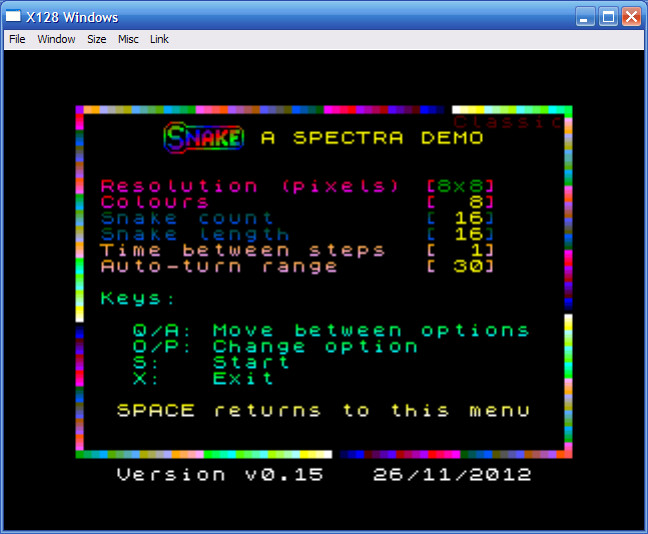
Snake Menu
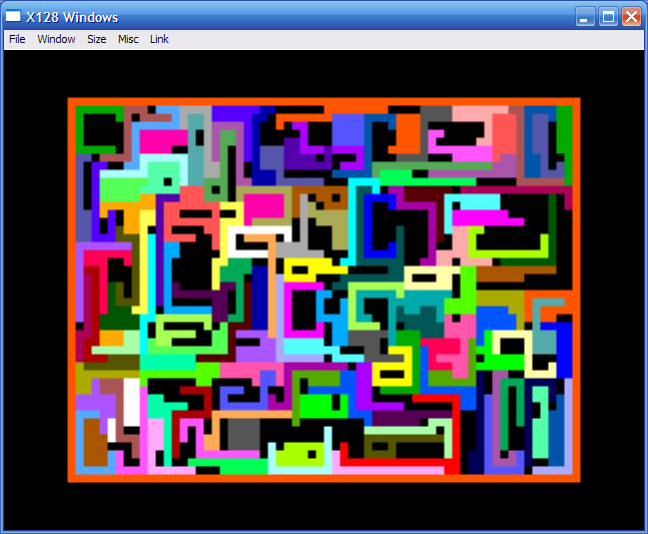
Snake 4x4 Extra Colours
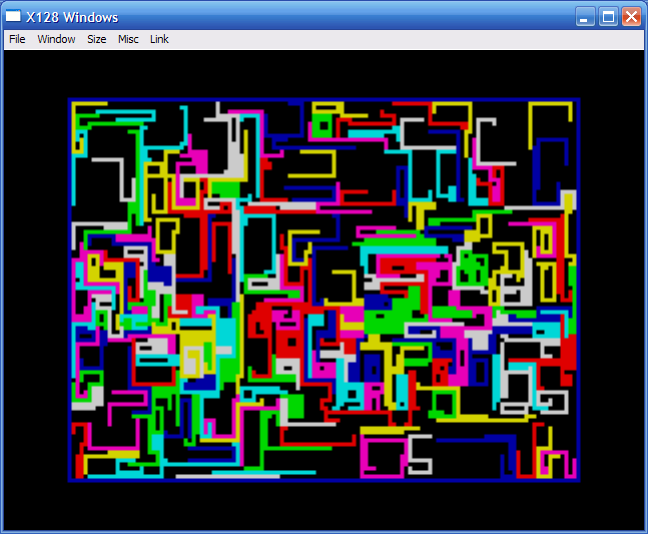
Snake 2x2 Basic Colours
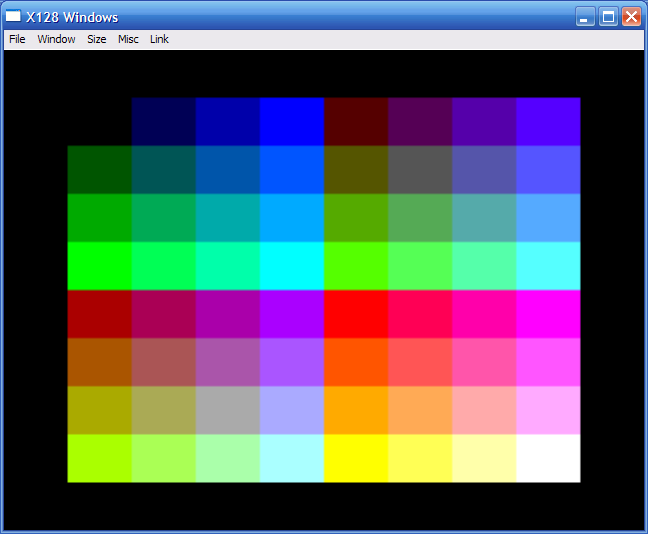
SPECTRA Palette
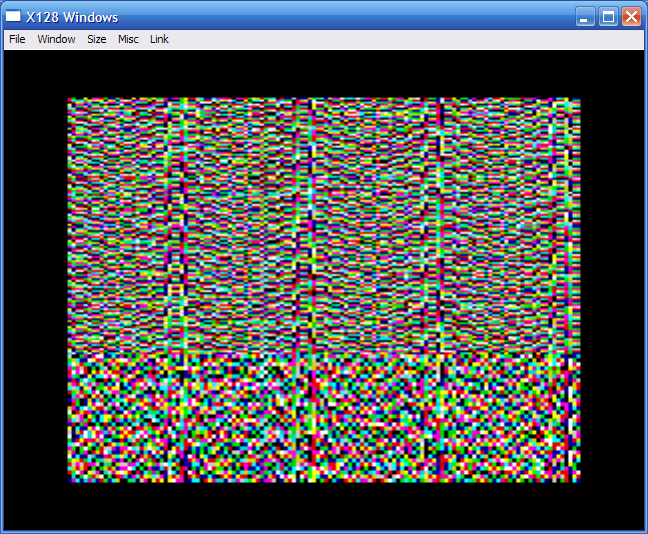
SPECTRA Highest Resolution Basic Colours
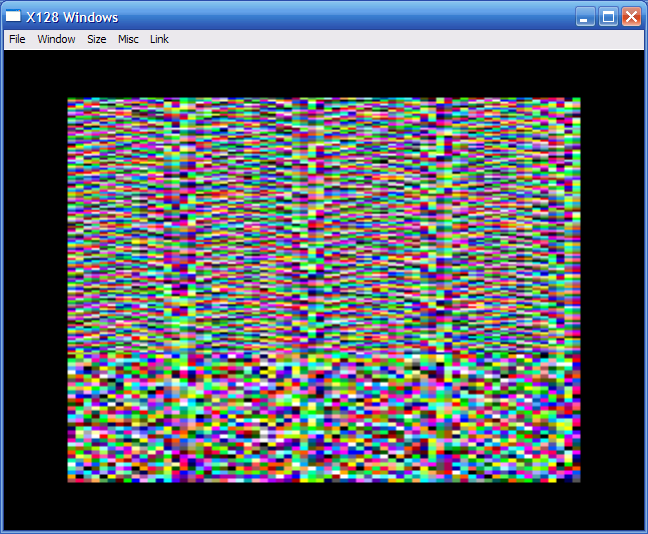
SPECTRA Highest Resolution Extra Colours
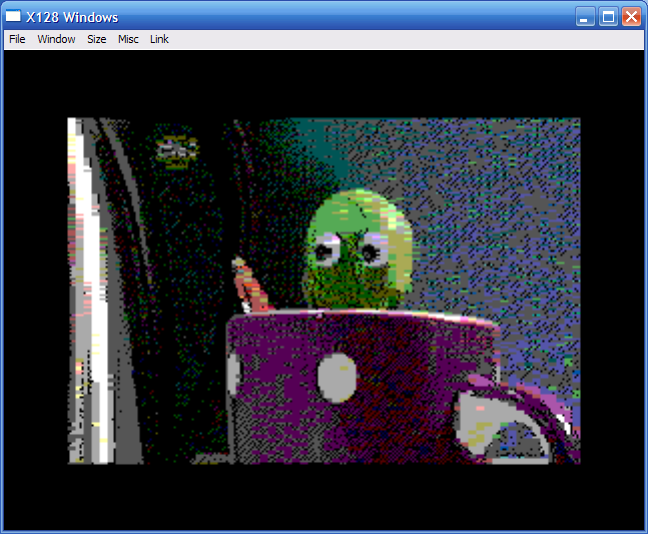
SPECTRA Image Viewer 4x1 Double Attribute Extra Colours
Vision TR-DOS and DDR CP/M.
Vision TR-DOS (using the Betadisk 48 interface) and CP/M emulation, as used in the former East Germany. The CP/M requires the LEC 80K RAM modification (not quite the same as the larger LEC RAM system I'd emulated earlier) which was popular in some places. All the details were thanks to Porthos, who also did some fabulous testing for me. We exchanged broken EXEs for days on end until I discovered the DirectX bug I had in the code all this time (it thought that any bitmap mode with alpha bits was actually a palettised mode).
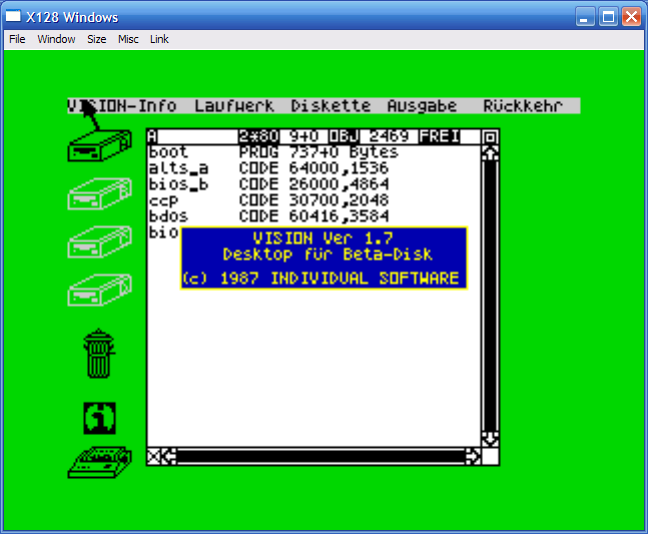
Vision TR-DOS
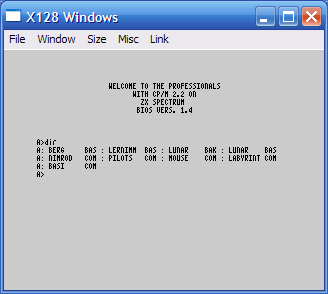
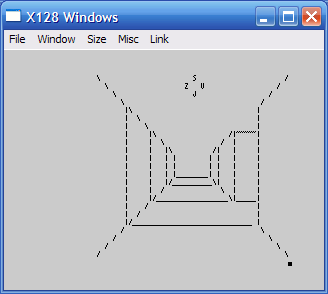
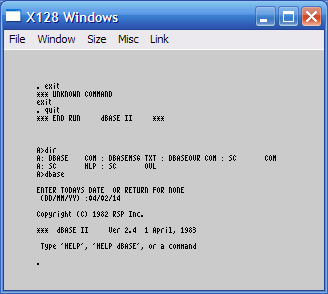
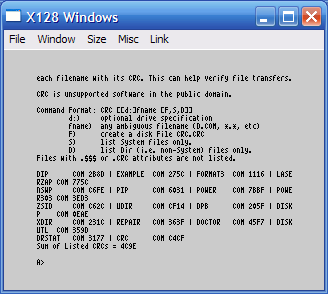
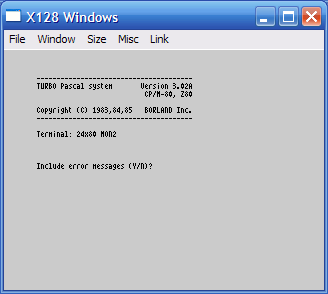
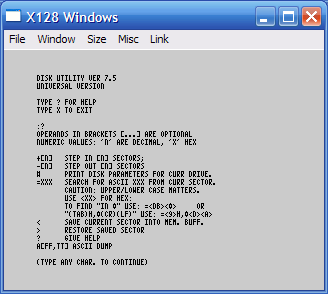
DDR CP/M
Rocky Gush.
Did you know that there was a disk interface in South Africa called Rocky Gush? It was named after its maker. I implemented a partial emulation of it a while back, but I'm having terrible timing troubles with it. It also implements a number of BASIC extensions in it as well (including a 64-column mode), it's a curious interface.
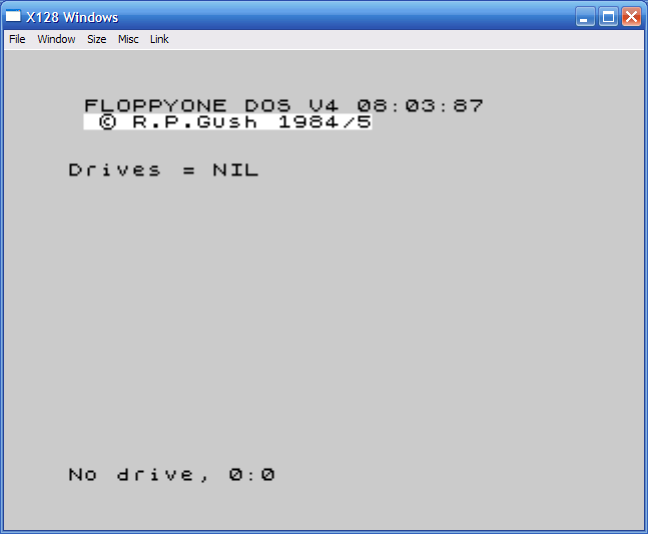
Rocky Gush bootup
04/10/2012.
OK, clearly I spoke too soon. Further information was found, it is possible to get to BASIC without a bootdisk and I was able to emulate it further than before. Here is a picture of a SpeccyDOS 4.1 directory listing! The boot disk would still be very useful though, as the snapshot button software is installed into RAM from it, so there is no NMI fun yet.
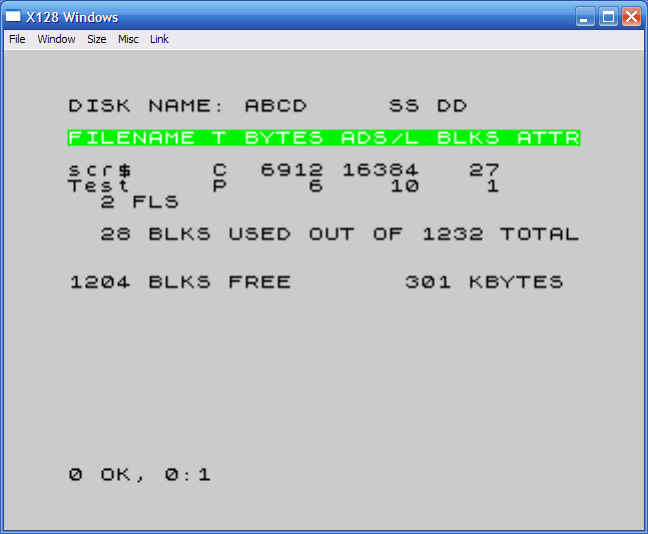
SpeccyDOS LIST*
02/10/2012.
I've been so busy, I haven't had a chance to update this page.
First of all, Watford SPDOS... This buggy picture is the first ever of SPDOS and possibly the last, if a boot disk is never found! SPDOS/KDOS need a boot disk, otherwise they just get stuck and you can't get into BASIC. The normal behaviour is to stick at the dull white screen looking for a drive and disk.
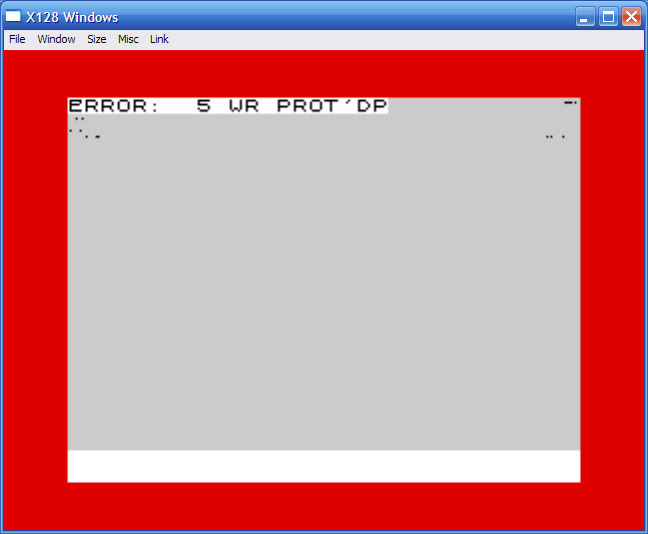
First and last?
Secondly, support for the Opus Discovery and Betadisk 48:
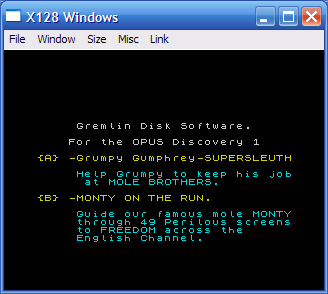
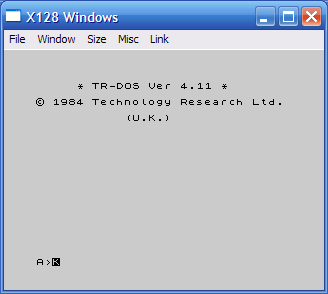
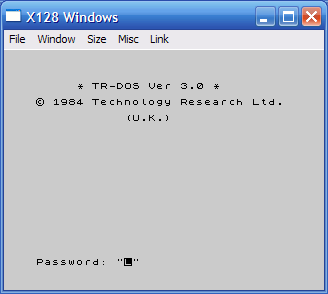
TR-DOS 4.11 is just 8K, while TR-DOS 3.0 is a measly 4K! Note that TR-DOS 3.0 is asking for a password, a feature that was phased out in later versions. Thanks to Velesoft for finding the older Betadisk 48 ROMs.
02/07/2012.
I have decided to move the Multiface stuff onto a separate page. Hopefully it'll be possible to find some of those missing ROM versions and build up the full list.
Multiface ROM Collection Project
After a little bit of work, it is easy enough to support the "old" Betadisk interface and to support the Opus Discovery by allowing a more complicated byte read routine in my Z80 engine (as much as I want to avoid it though).
The Kempston Disc interface (which was formerly sold as the Watford SPDOS interface) is a much harder job. The system is loaded from the drive when the computer is switched on or reset - it will not go to BASIC if it can't find it. As a result, you can do nothing at all if you don't have a drive and disks! One (uncorrupted) ROM of SpeccyDOS 4.1 is available, but it would also need a disk image (at the minimum) to try and emulate it. (NOTE: It later turned out that SpeccyDOS was unrelated to SPDOS!)
01/06/2012.
TZX files loaded as TAPs for the first time... will be better when it can do a bit of edge loading mixed in too. The new conversion of Majikazo uses the unofficial instruction "RES 0,(IY+004),A", which I hadn't bothered emulating... there's always one isn't there, so I added that one instruction in place of a proper fix for all those DDCB/FDCB special instructions.
I remembered that I briefly had a Multiface 128 that could save to "hypertape" and Opus Discovery. I got it, but it wouldn't work with my DISCiPLE interface so it had to be sent back. A replacement arrived with a newer ROM which supported the DISCiPLE/+D but lost the hypertape support. So I found the various versions and instructions and looked at the drives they supported...
Multiface ROM Collection Project
An interesting chronological record of support for various devices... There was a huge range of third party storage devices available in the early days and the ones listed here seem to be the most popular of them.
I don't support the Opus Discovery, Wafadrive or Kempston Disk or the older Betadisk it seems to use (the $3C00 entry point version). So, I thought I'd have a quick go at this, although it's far from perfect:
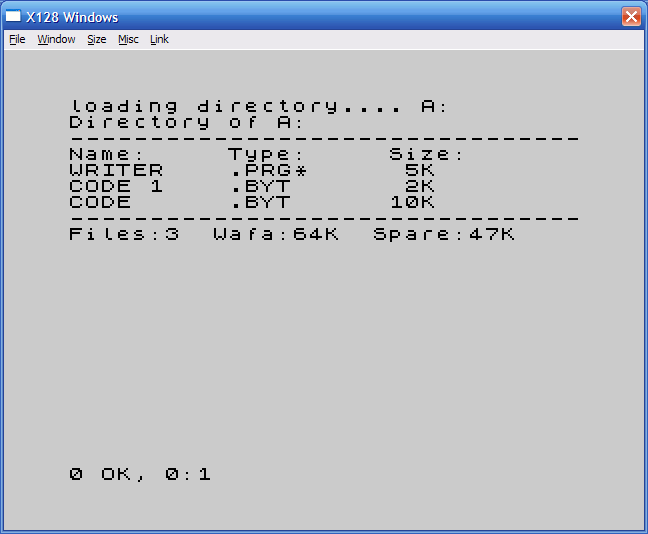
Wafa
There is a grand total of... one wafadrive cartridge that has been dumped. There's the directory of it up there! I don't think it's a perfect dump, the original would've been on a "16K" wafer, which would've loaded a bit quicker.
12/12/2010.
I have reintroduced the old beep interpolation, as certain games (using Wham Music Box-style routines) have high-pitched beeps in them. I've also rejigged all the tape loading/saving code so that I can add extra functionality to it (most of which hasn't been done yet). ZX80 "O" file loading/saving, ZX81 "P/81/T81" loading and ZX81 "P/T81" saving implemented, which is a bit pointless as the screen still rolls around like crazy. You can now also read a tape from 16-bit VOCs, 16-bit WAVs, (some) 24-bit WAVs and 32-bit WAVs. Although this is really pointless, just a side-effect of tidying up some routines.
05/07/2010.
OK, having a lack of time, I've decided to go for an "open alpha", so that anyone can try it out. Please note that this version is far from complete and is probably not much use for the inexperienced Spectrum emulatist. The ZIP contains both DOS and Windows versions, so you can have "fun" trying them out. The text file is probably the best way to find out what's new, but it does waffle on a bit.
X128 V0.95B Open Alpha (DOS & Windows)
18/03/2010.
The DOS version now supports PS/2 wheel mice for the emulation of the wheeled Kempston mouse! The CuteMouse driver is the only DOS driver capable of supporting the hardware required.
15/03/2010.
Did you know that sound output under Windows can go up to 192 Khz, 32 bit, stereo (or more if you have a surround sound setup)? Well, so can x128. All those soundchip emulation imperfections can now be heard in far too much detail, in a manner that would require a platinum ear to be able to hear the difference. WAV files can be output in those formats too, some of which can't be played on Windows Media Player and require something like GoldWave instead. The DOS version has been updated to support SB16 16-bit output and 16-bit VOC file output - you love it!
11/03/2010.
Finally managed to get my Win'98 machine working. X128 Windows runs from double clicking, but not from the command line (windowed or otherwise). It ran normal Spectrum stuff at just about the right side of 100% on the AMD K6-2 400, which is not terrible but could be a lot better.
28/02/2010.
A slight reduction in available features, as Quazar-produced hardware is off the agenda.
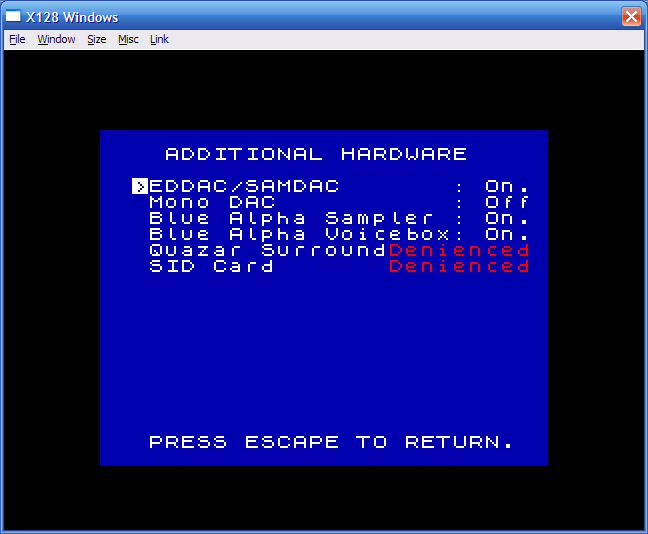
Denied
25/02/2010.
I dug out my old PCs to try the latest version on. The 486 had a flat BIOS battery but was able to run it at about 30%. The AMD K6-2 400 wouldn't boot up at all. I hope the reduction in speed is purely down to emulating too many soundchips at the same time. I'm not an expert with Windows message handlers, but I've finally made one that doesn't use up all the CPU time in a single core, with the benefit that my laptop fan no longer zooms up to top speed.
20/02/2010.
SAM TAP loading added (takes ages), probably not at the right speed, but the ROM tape loading routines are robust enough to handle it. Also, SID card emulation added to the SAM, no filters and slightly suspect white noise though. I've done a bit of ATM Turbo 2+, but it's not quite ready yet.
Finally, I've fixed up the SAM FDC enough so that Prince of Persia works now!
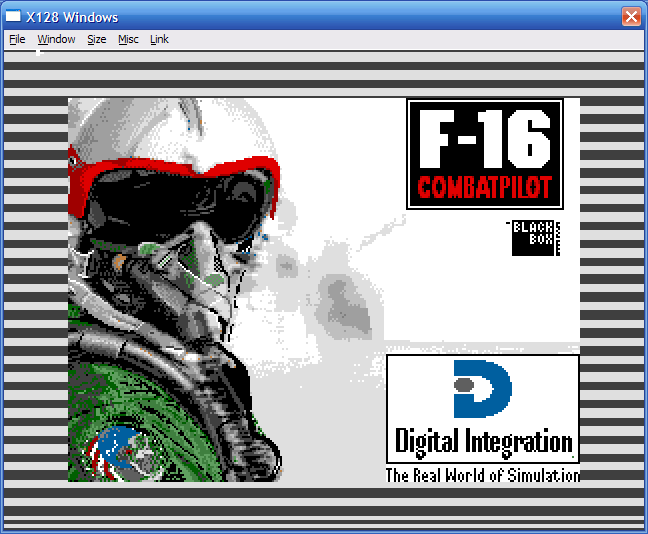
SAM tape loading
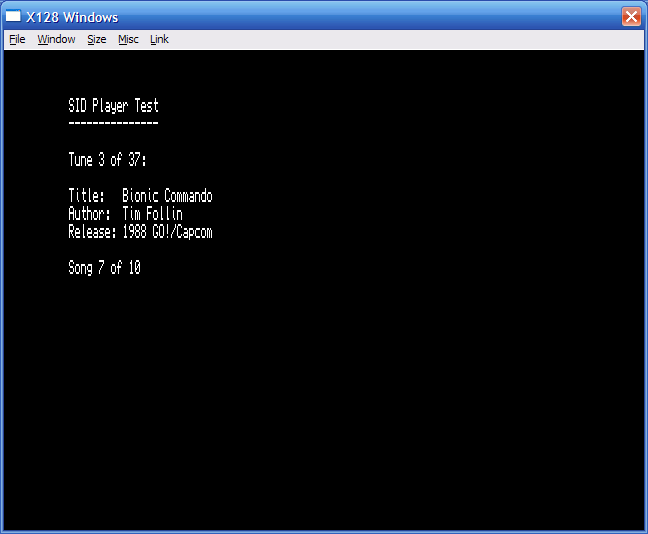
SAM Sidplayer
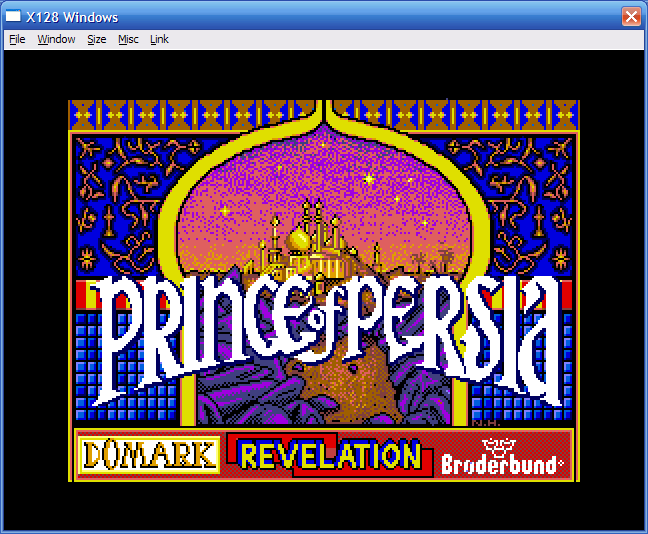
SAM Prince of Persia Title
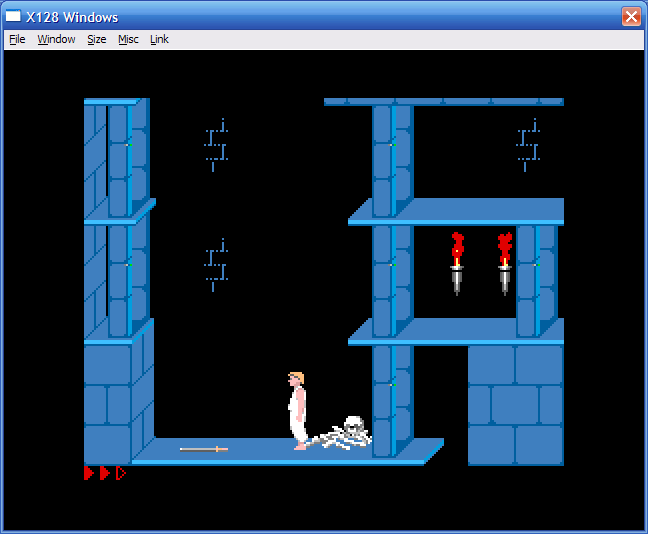
SAM Prince of Persia
09/02/2010.
Peeep... ATM Turbo and LEC 528K. The ATM Turbo has a 640x200 mode with 8x1 attributes and a 320x200 mode with one colour per pixel using 16 colours from a palette of 64.
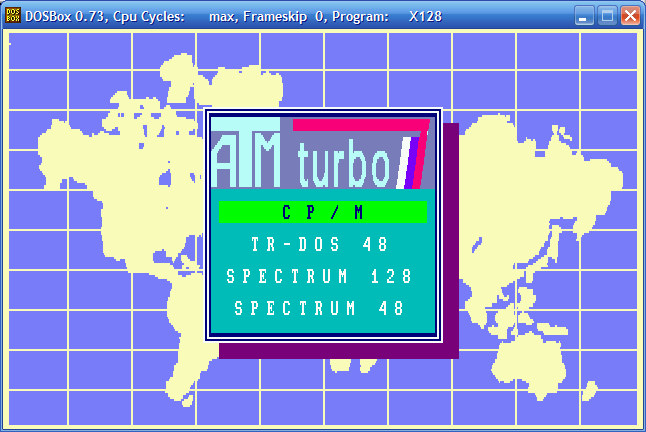
ATM Turbo Menu
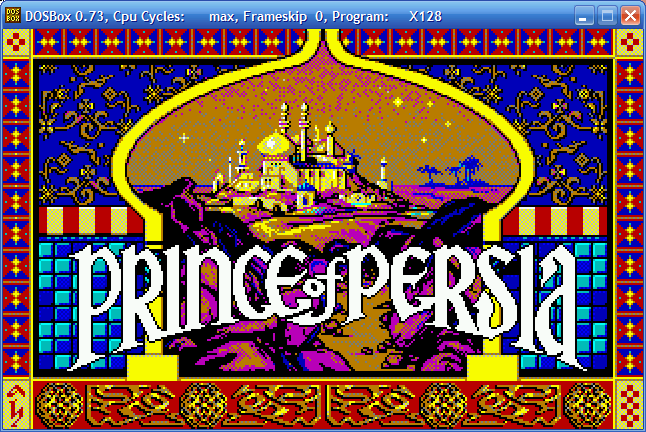
ATM Turbo Prince of Persia Title
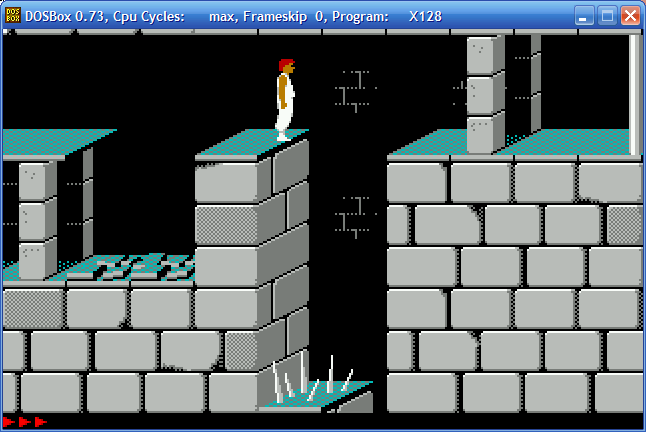
ATM Turbo Prince of Persia
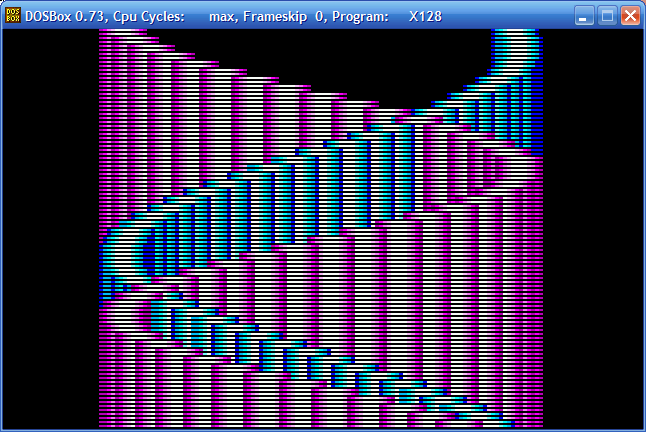
ATM Turbo Personal Nightmare Demo
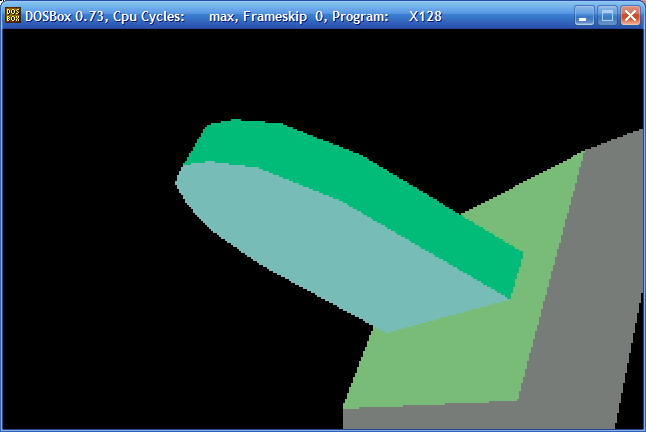
ATM Turbo Personal Nightmare Demo
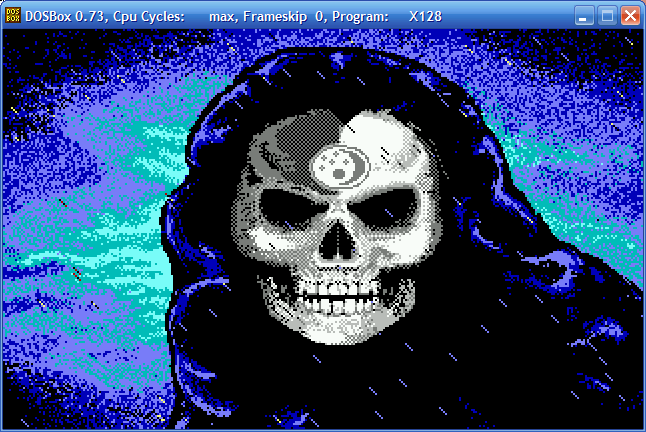
ATM Turbo Personal Nightmare Demo
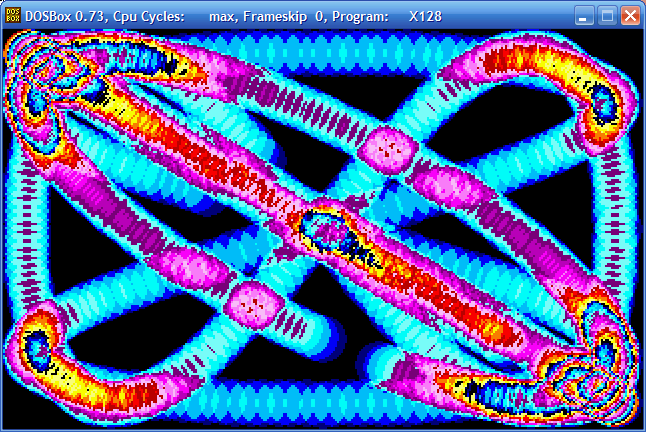
ATM Turbo Personal Nightmare Demo
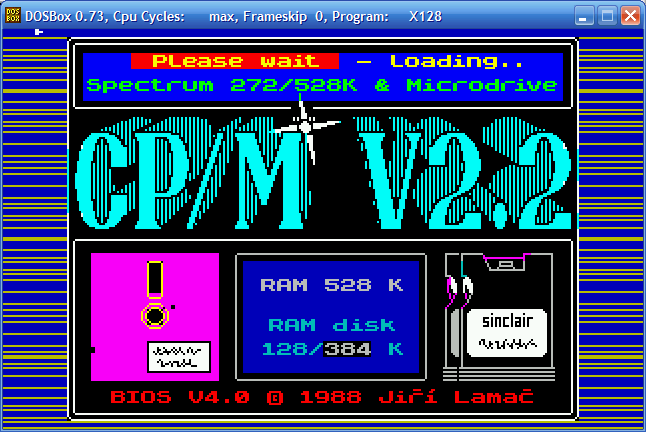
LEC CP/M Loading
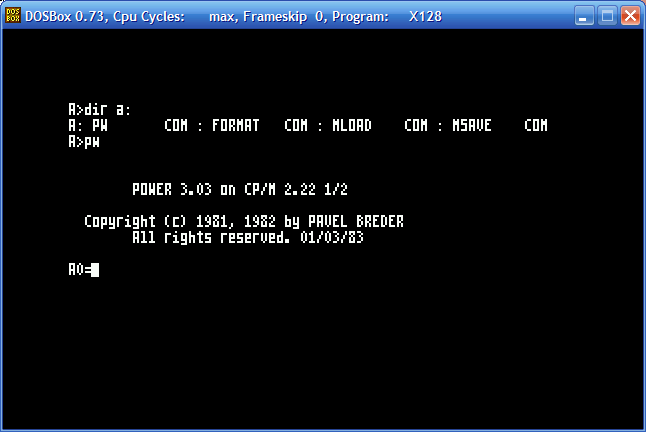
LEC CP/M
02/02/2010.
Peeep... A bit of SAM. The sound and disk controller still need improving.
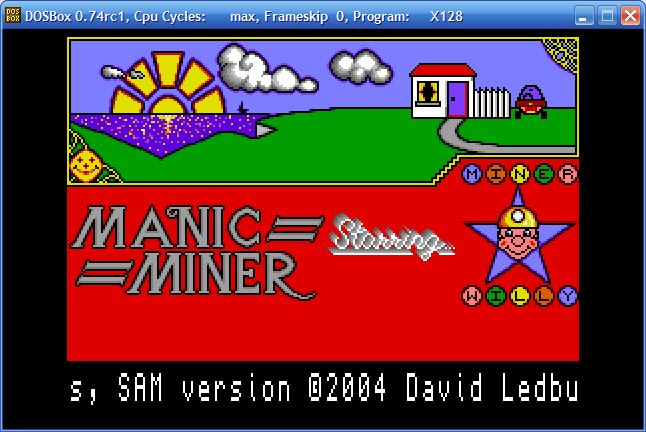
SAM Manic Miner
25/01/2010.
ZX81 emulation is a nightmare! I've totally rewritten it, but it still rolls and wobbles all over the place. I've added the "correct" volumes for the AY chip (I think) as well as the YM version. As a bonus, Turbosound AY is now working. The YM2203 FM status register is faked so that demos that use it can be played without freezing (but without the lovely FM sound).
14/01/2010.
Microdrive support finally added (for IF1 ROM v1 only, though). AMX and AY mouse fixed. Kempston Slave and Atari mouse added. The Windows version does not have proper mouse support yet (not capturing the mouse input) but the buttons and mousewheel do register. Currah Microspeech, Cheetah Sweet Talker, Fuller Orator and DK'Tronics Speech Synthesiser support! My sample set will need to be tidied up a bit though. The hardware menu (F3) now goes to three pages. More flexible number of tracks allowed in TRD files, so Robocop 1024 works.
03/01/2010.
Peeep... A tiny snippet of the Pentagon 1024SL supported - a 256x192 mode with one colour per pixel using the fixed 16 (15 unique) colour palette.
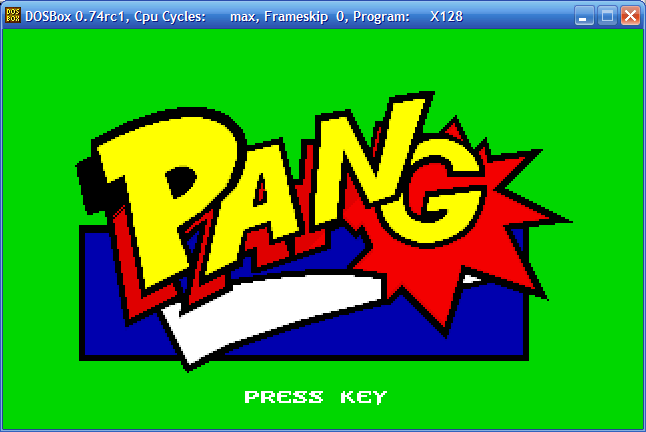
Pang 16C
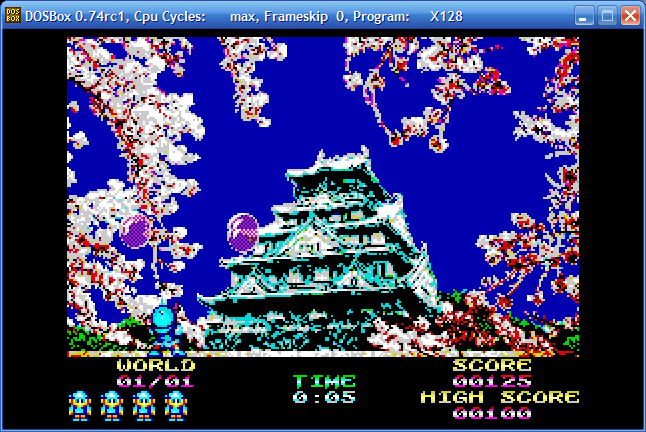
Pang 16C
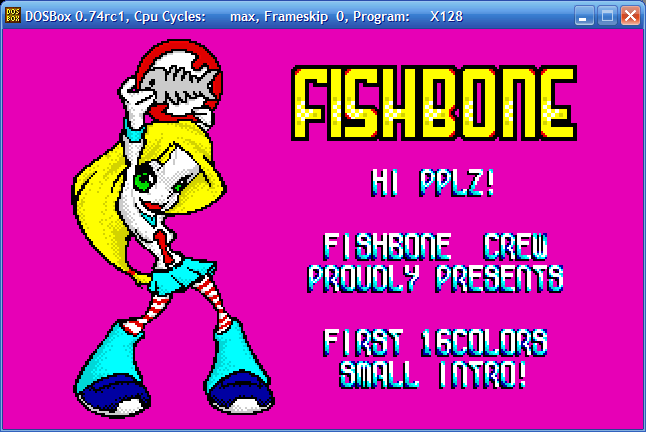
Borntro 2008 16C
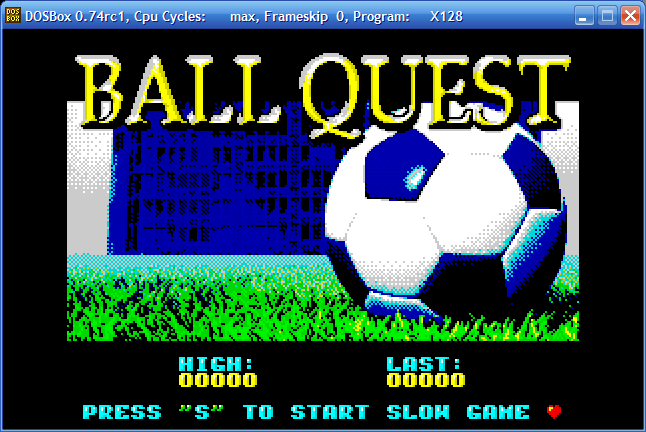
Ball Quest 16C
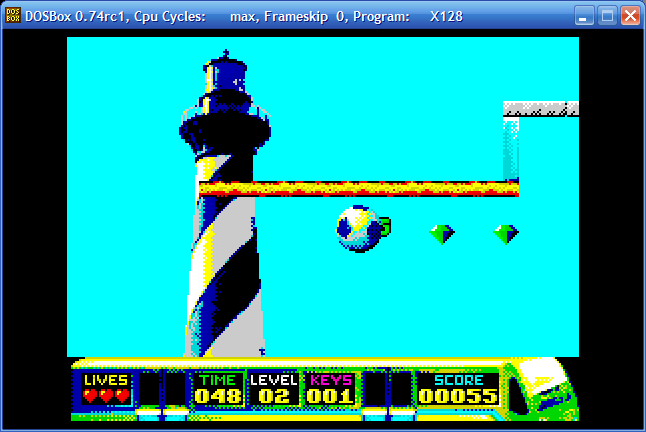
Ball Quest 16C
24/12/2009.
Peeep. ULA+ site.
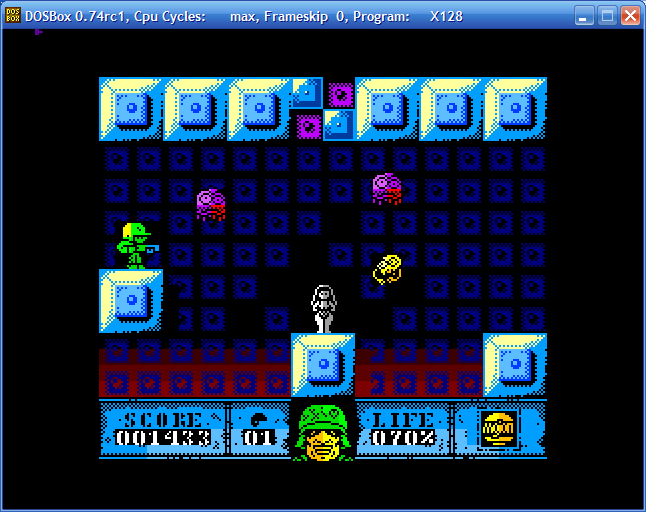
Sgt Helmet ULA+
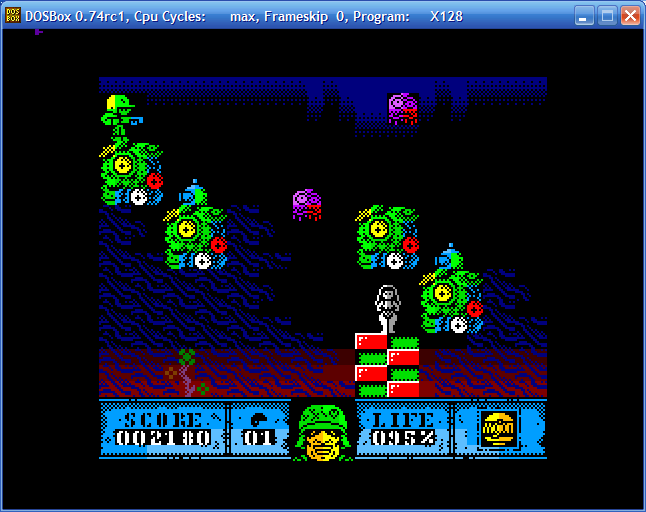
Sgt Helmet ULA+
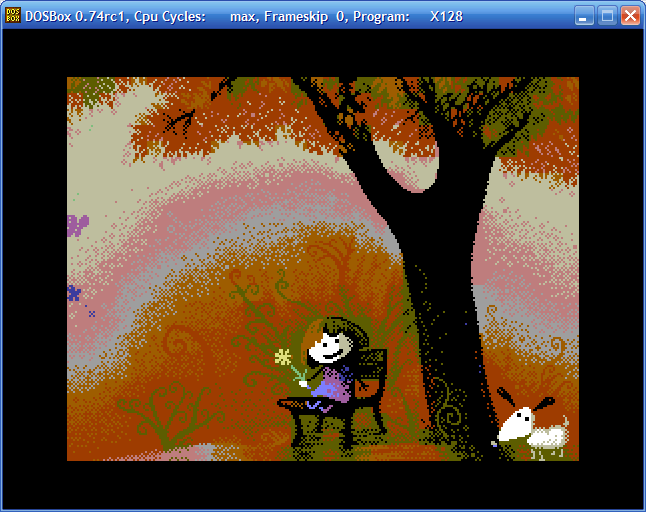
C64 converted piccy ULA+
26/07/2007.
A little bit of news! X128 V0.5 has been ported to the Atari Falcon by Peter Persson! It was shown for the first time at the Nordic Atari Show. It's a bit slow and needs a fast machine, but future versions should have much faster screen rendering.
("Follow the link" to get to the NAS2007 downloads).
Generally, I have been too busy with work to do anything on my projects for several months now. :(
But I have upgraded my 486 to 66 Mhz and 28 MBs! I've also bought a network card for it, so that I can compile on a faster machine and copy it across easily - eBay is good for something. ;)
Some people have been wondering if a new version of X128 will be released. I do want to make a brand new version, I feel that an up-to-date DOS emulator would be very useful for old laptops, etc. Additionally, I do want to make the code more portable, so I want to finish off a Windows version and maybe a console version (still trying to get an N64 version of gcc up and running).
03/05/2004.
Not a great deal (time constraints). The DOS and Windows projects have been reorganised so that they share as much source as possible. This allows me to write something in one version and be able to compile it straight into the other one.
The Windows version now runs at full frame rate on a P400, although the DOS version has got a bit slower, due to adding support for Covox, Stereo Covox, Soundrive and Specdrum audio (and the more generic mixer code, that has to handle a variable number of channels and convert them down into whatever the output format is).
The DOS version is partially through an attempt to get it to output 16-bit sound (handy when you're mixing 11 channels), but it never quite works... I can get it to sound OK at half-speed or playing half-correct/half-random noise at full speed. Due to the way the new sound code works, I suppose I could actually try and use the proper volumes for the AY chip... maybe.
15/11/2003.
I just thought I'd say a few words about x128w. It now works (the ZX80 and ZX81 aren't running very well, but they're not running very well in the DOS version either) and with sound! It needs to be a bit faster, as it needs frame 1/2 on a P400. "In-game" the keys are all working fine, but the front end key handling needs more work done to it. I also need to add some fiddly little FE screens that handle some control and video options in a way that I think Windows applications should handle them. (Although I tend to download DOS versions of software, so maybe other emulators have these things implemented already!)
Tests show that it runs under Win'98, but not XP! I don't know why.
30/06/2003.
I guess I couldn't put it off any longer... The tidying up of the code finally reached a stage where I could start work on the Windows version. It's at the early stages, less than two weeks old.
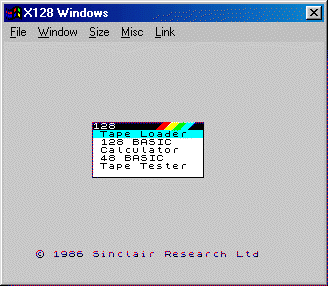
Not very exciting, but what did you expect?
It looks mostly like the DOS version, but can (optionally) run in a Window. All bit-depths are handled, except for 8-bit palletised on the desktop (which I'll try to fix).
Keyboard input works (needs a bit of debounce to stop the menus from affecting the game), but not joystick or mouse.
Parameters passed in don't work yet. Sound isn't being played, but is still being generated.
28/01/2003.
It's been a long time since I updated this page...
Anyway, I've added ye-olde VGA text mode (nicked from Z80), which should hopefully allow older machines to get a better frame rate. I tried it on my old 486SX-25 and it did indeed allow me to run at a higher, more playable, frame rate.
The other thing I've done is added support for banked VESA 1.1 modes (yes, I really am going backwards through time). I'd implemented it so that VESA 1.2 drivers would be supported, only to find that my old 486SX-25 only had a VESA 1.1 driver... A bit of modification and (really) slow compiling later, and it was astounding to see that old machine run 640x400, 640x480, 800x600 and 1024x768 resolutions, providing all the usual options that anyone who likes to have fun with shift-F11 will know about. Not very quickly (obviously), but not too bad. Just imagine what it'd be like if I stuck a 486DX2-66 Overdrive chip in it!
One snag is that X128 clearly uses up too much memory. It used to be happy in 640K (many versions ago) but now it looks like it needs roughly 4 or 5 free megabytes of RAM. I must try and reduce it, preferably to run on a 4MB machine (with or without a clean boot).
Oh, one other thing I'm doing is adding ZX81 tape support via VOC files. I've never actually owned a ZX81 (or a decent technical document), so it's not as easy as I thought it would be. There are some beneficial side effects....
Nice, but attempting to load VOCs in ZX81 mode, just shows up the weaknesses of my ZX81 emulation, for the moment.
29/08/2001.
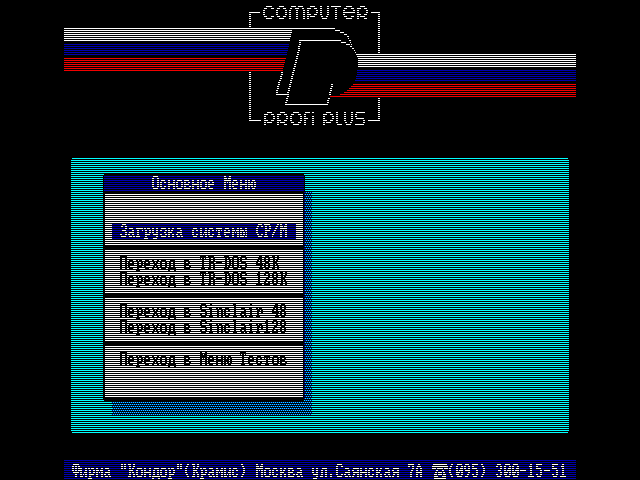
02/03/2000.
21/02/2000.
I didn't think I'd do it, but I did! I changed it to deal with all disk images (internally) as if they were FDIs. This lets FDI, FDD and funny sized TRD files (80T SS, 40T SS, 40T DS) be used as well as the old TRD (80T DS). Although 40 track disks only work if you type "40" into the TR-DOS prompt. TR-DOS thinks that a 40 track disk is in an 80 track drive and automatically compensates by accessing TRACK*2 (which is not what I want in this case)...
I then went a step further, so now SCL and $? (Hobeta) files can be loaded by the automatic creation of a temporary TRD file in the background! So, 5 formats in all, I had to change my file selector to accept more extensions (there is now no limit, I pass it the same double zero terminated string that the Windows load/save dialogue box uses). Until I hear otherwise, that's every "Russian" format catered for.
The WD1793 code can now be used in either x128 or Multi with only 2 lines being changed (one of these is because of x128's old Z80 core and the other is because of a minor incompatibility issue with the Didaktik). When opening a disk, the addresses of get_track and get_data routines are passed to the function, this is what allows most of the portability and the ability to handle any uncompressed format thrown at it (including the MSX's DSK). The drive select/side select/motor/etc bits are made more generic by a cheapo method which really will have to be improved.
General emulation quality of the WD1793 has also been improved slightly, but not enough to get the Refresh demo working or to get round the protection system which is called "ARS PROTECTION" (ahem) in AnyTank (also used, in one form or another, in other demos/mags). Whether the FDI support is really working to it's full capacity is unknown. I don't do anything with the CRC bits and the only two FDI files that I managed to find were quite happy to work after they'd been converted to TRD files. I haven't managed to find any IS-DOS disks yet. "ADS 2.0p" now thinks that disks have 81 tracks instead of an infinite number, so: better, but not perfect.
And I probably shouldn't be calling it the WD1793. WD2793 might be a better name for it.
I have a limited amount of information on this, I know the ports that it uses and I know that it uses the same FDC as the Betadisk interface. I also know it's memory layout and I think I've finally figured out where I should be putting my patches so that it pages in. Unfortunately, all I get is "X Bad Device" error when I try to load a sector. The sector does load, it's just that some flags somewhere make it generate an error in BASIC. I do get the correct "Retry" and "Write Protect" messages when I leave the disk (image) out or write protect it when I attempt to write to it. Mind you, I don't have a D40/D80 disk to insert, so I just use a TR-DOS formatted disk... I have some documents on the disk format and the commands, so I could (...) generate a disk.
It takes ages to load one sector because the interface has the DRQ line attached to the NMI line and my Z80 core only allows NMIs every so often! A good excuse to rewrite the Z80 core... (Hmm, that "rewrite" word again...)
I've found some games in .000 format, but I don't know much about that either. It looks just like the output you'd get by saving to tape, but with an extra byte at the start.
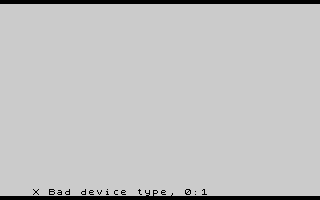
Unfortunately this screenshot doesn't do anything to make this webpage look any less black and white.
31/01/2000.
Partial emulation - working well in slow mode, dodgy in hi-res games and rolling wildly in fast mode. The grey border is left behind from the file selector (which is still using the Spectrum screen). Some games lock up the emulator...
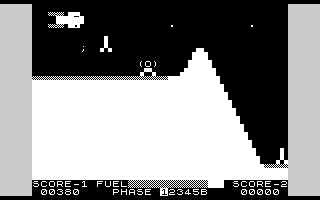
Good!
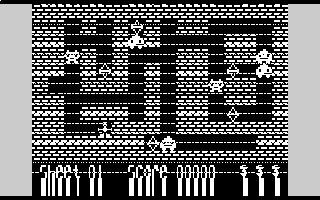
Ah....
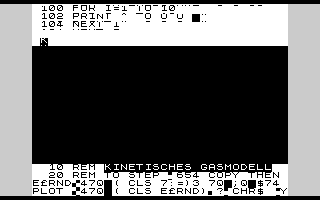
Oh dear...
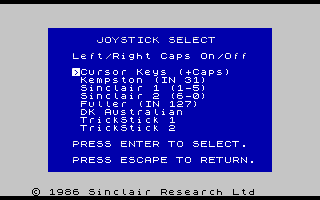
This is not very useful, it allows you to play Arcadia (which only supports Fuller joystick (and keys)) and you can play Matchday or International Matchday with any joystick! I'll add a "redefine keys" joystick later, except that I'll allow more than one fire button (Gryzor here we come). I'm also wondering whether "DK Australian" is a tongue-in-cheek name....
All this won't fit into an old-style .Z80 snapshot, so..... a new snap format may be required.
Considering (in a really hypothetical way...):
Requested Items:
(C) Jane McKay, 2025